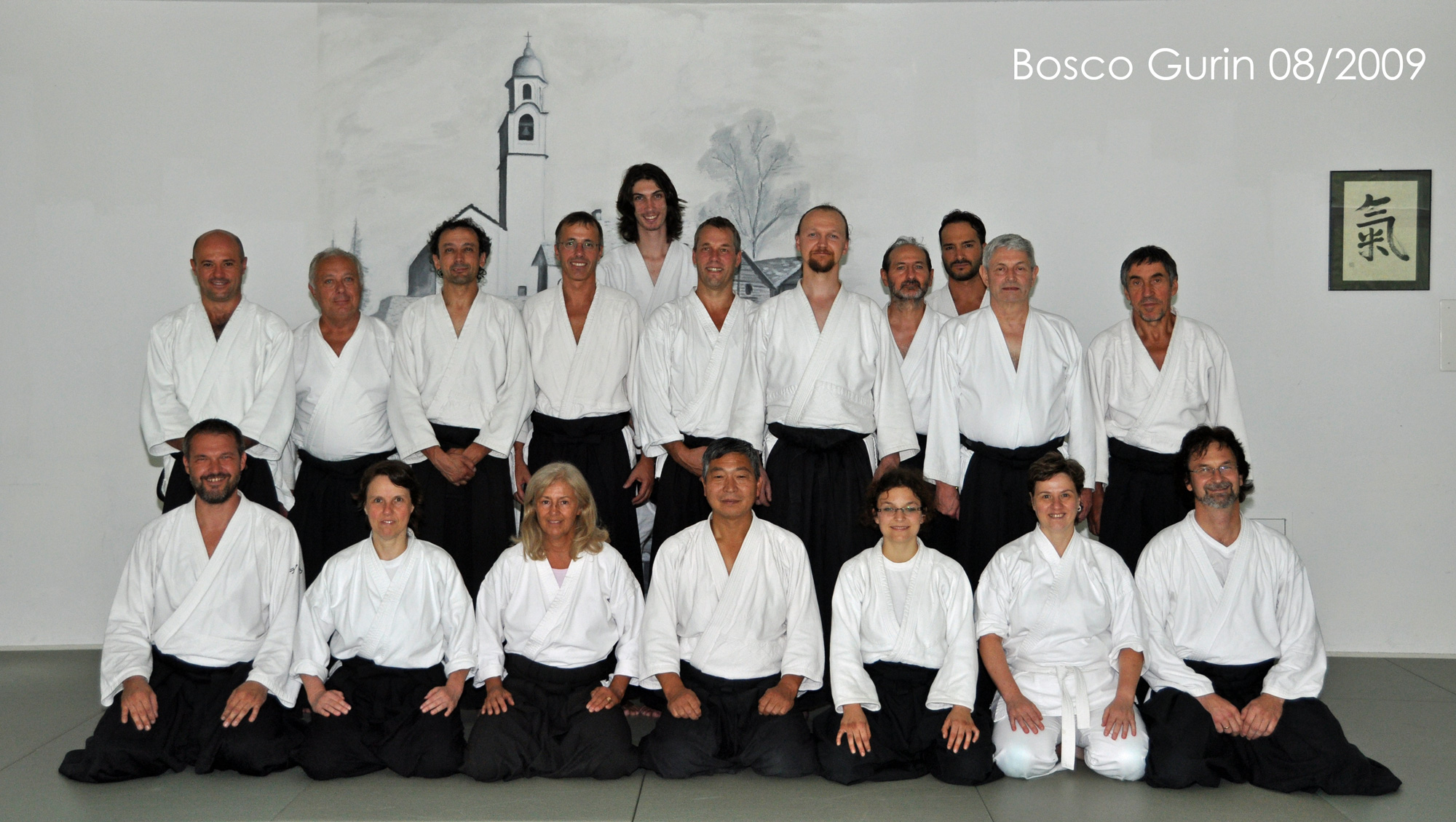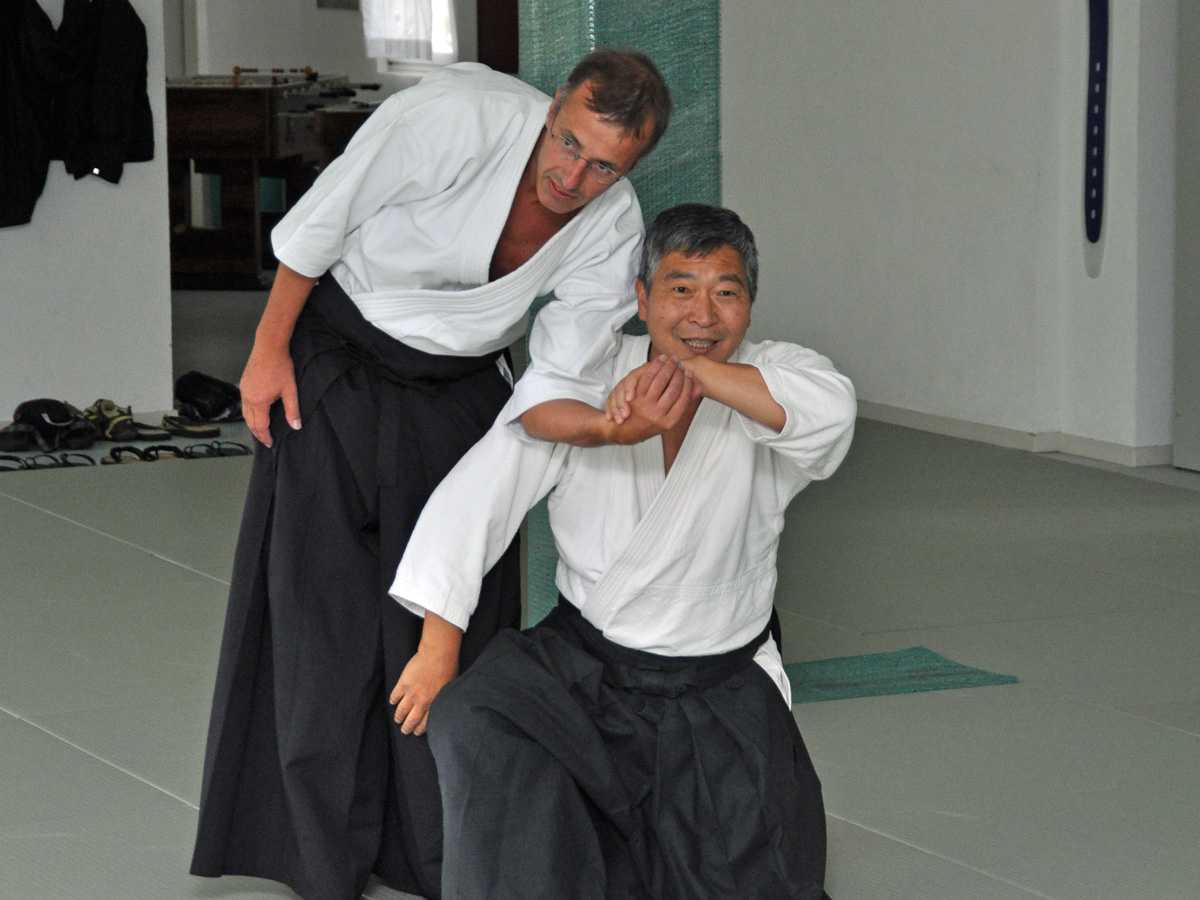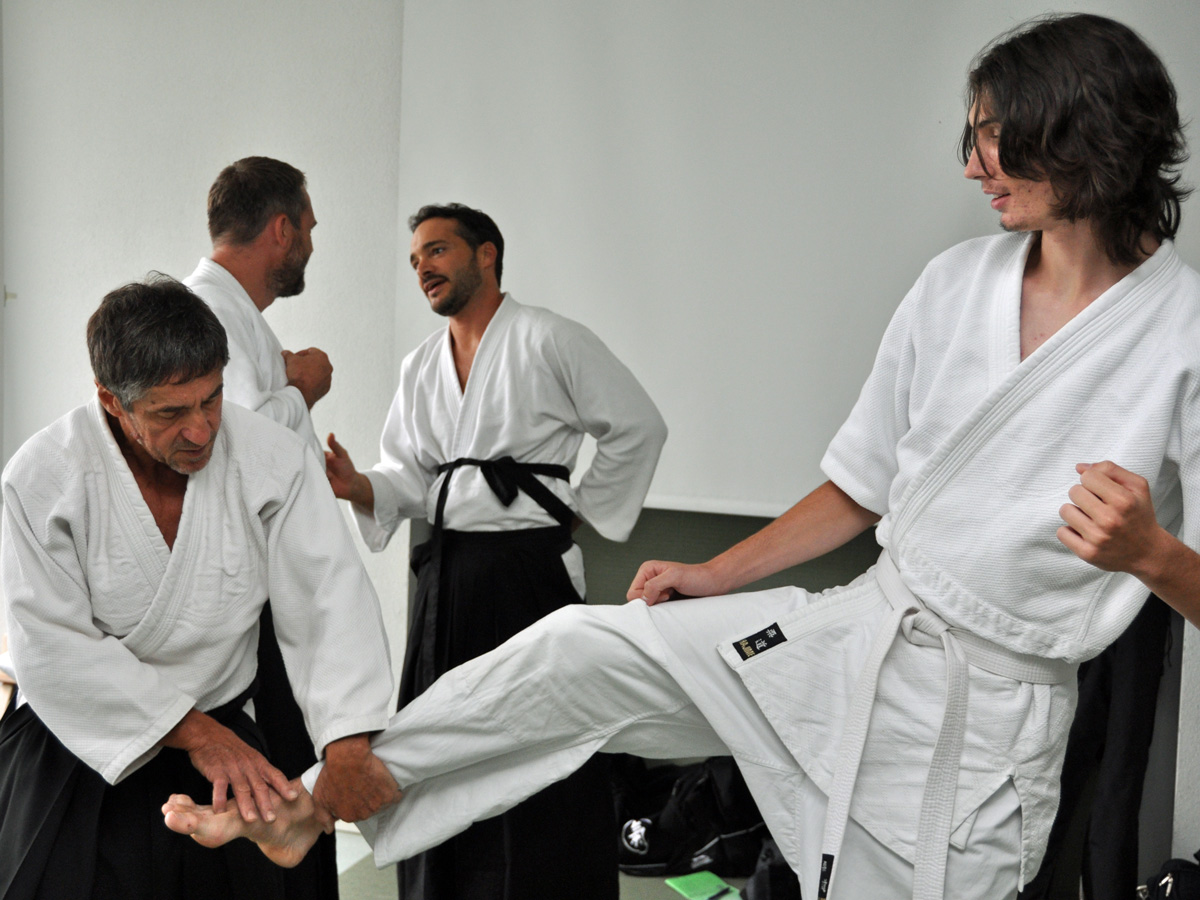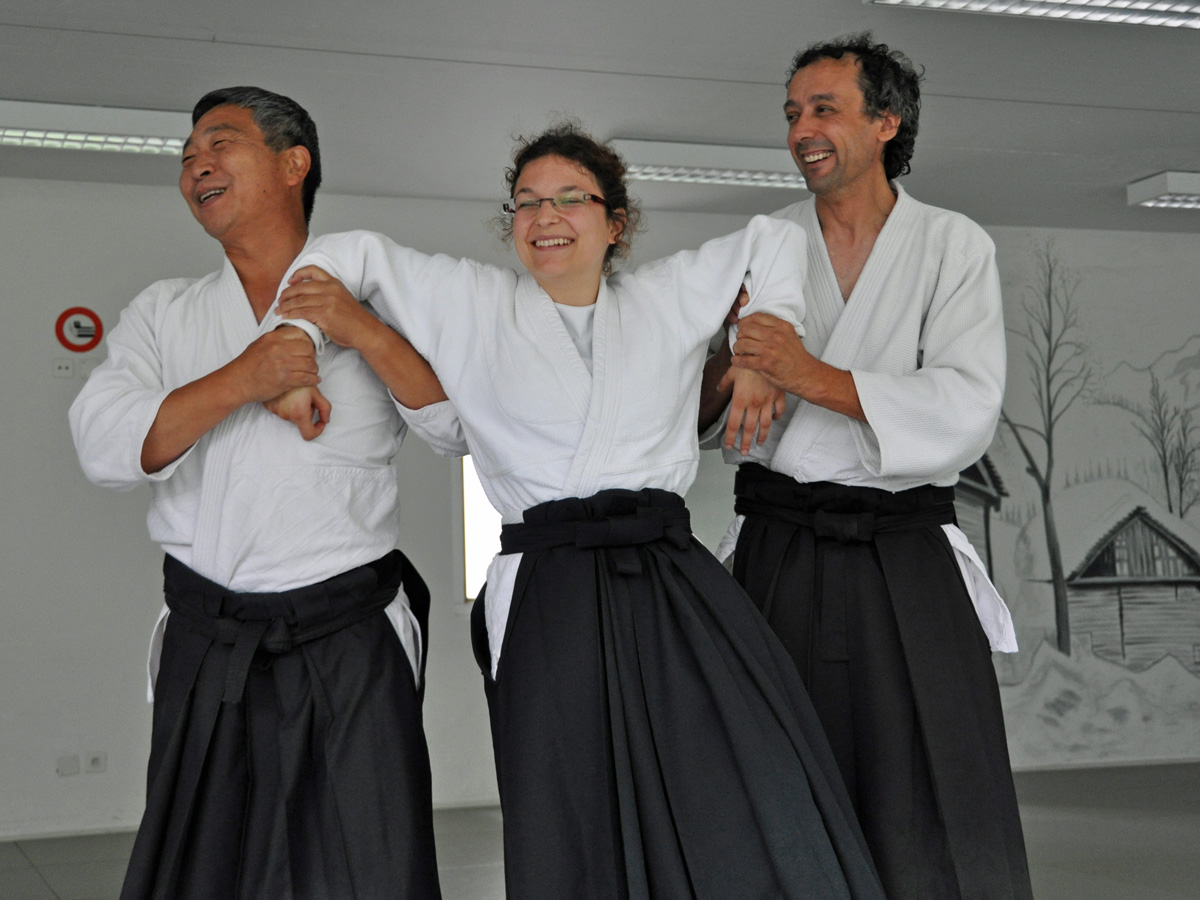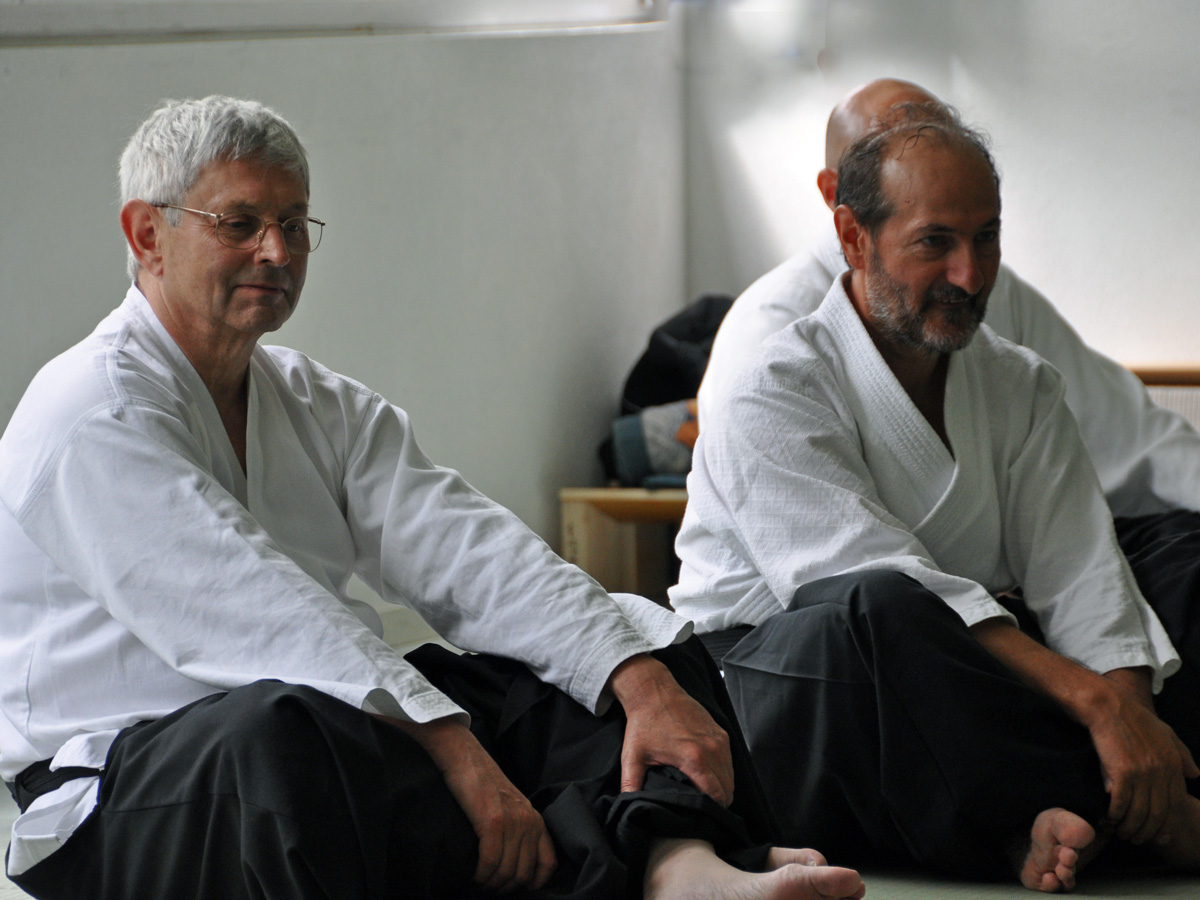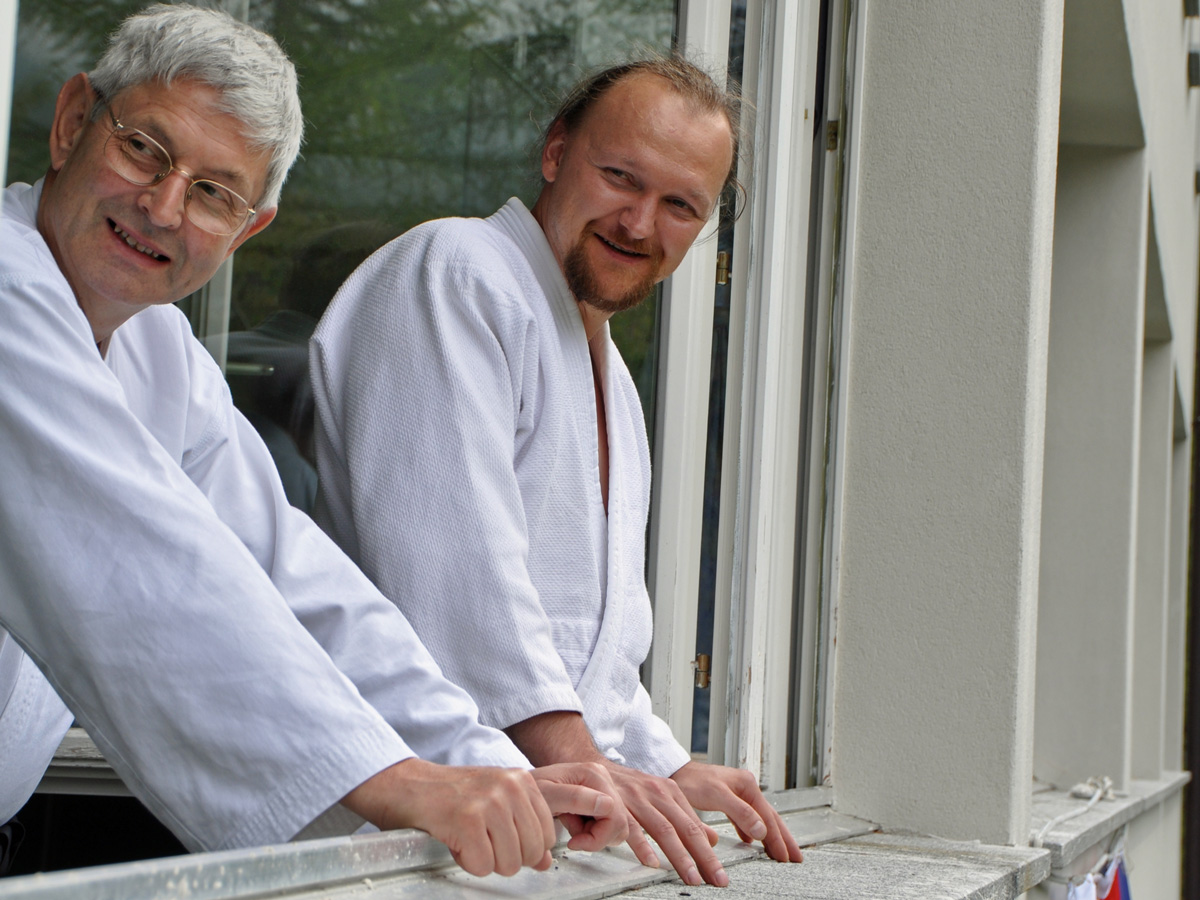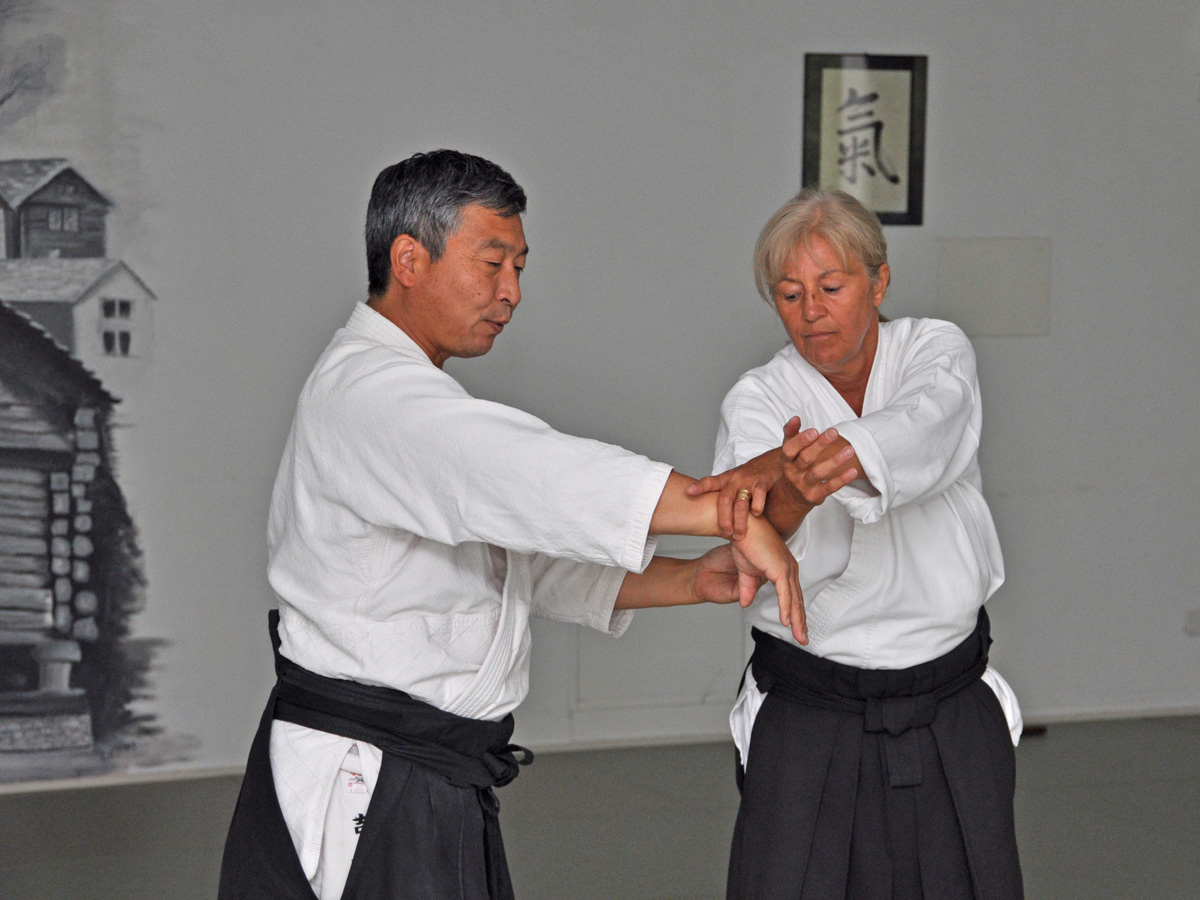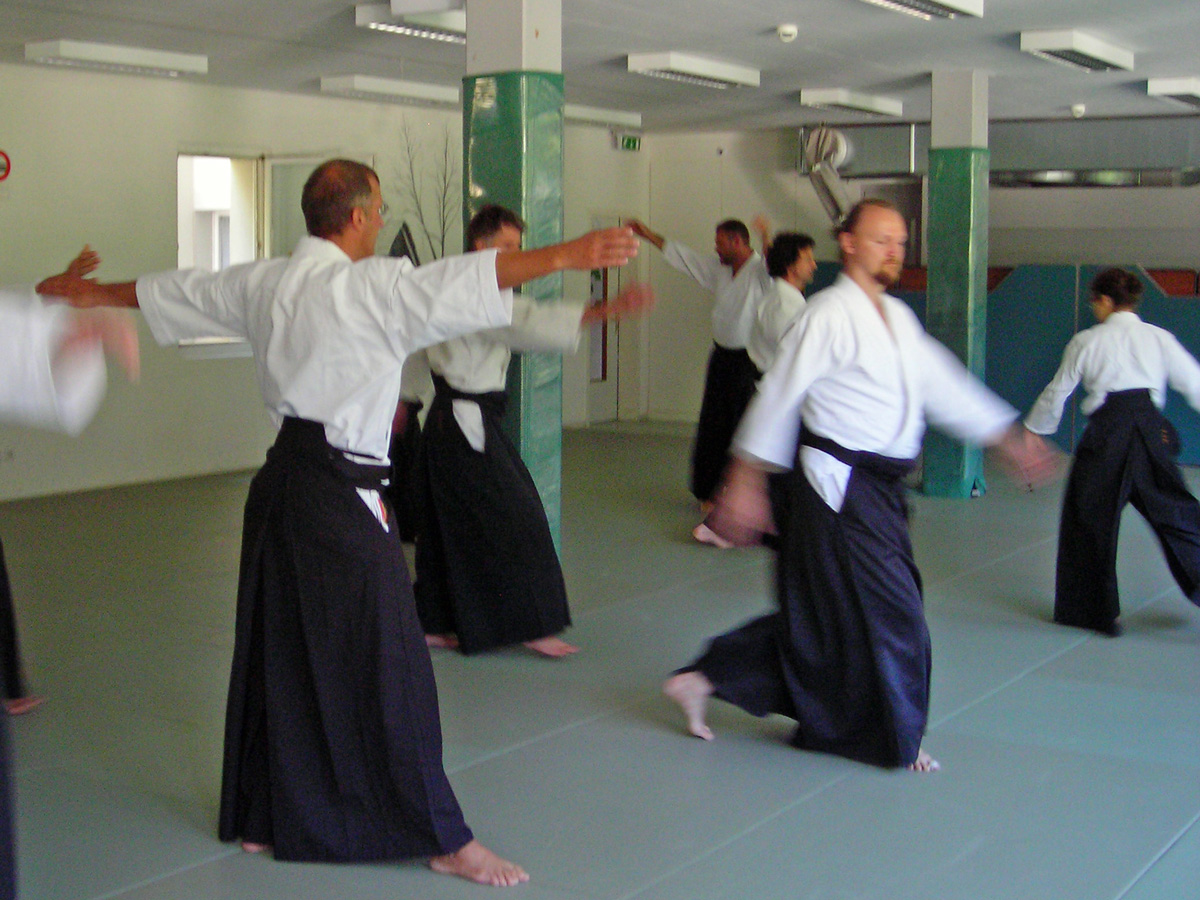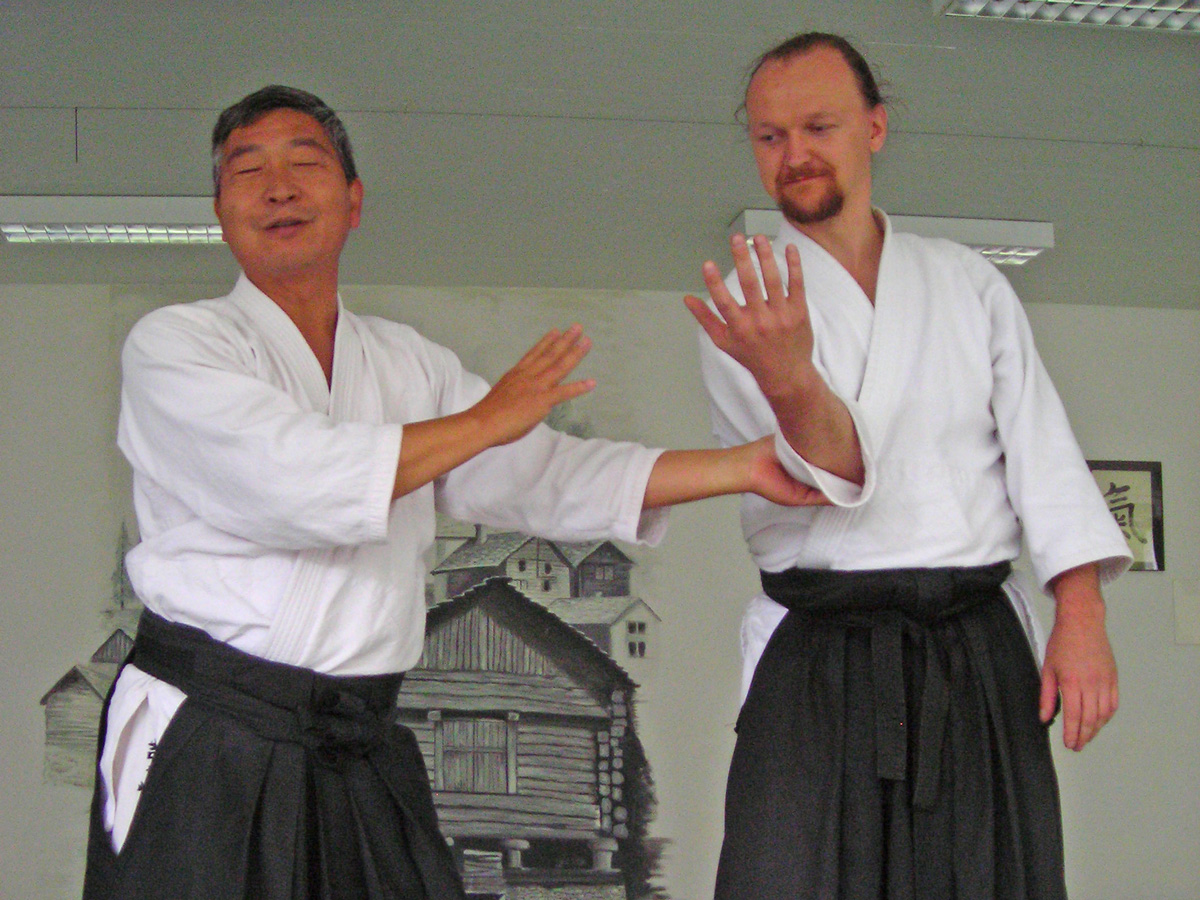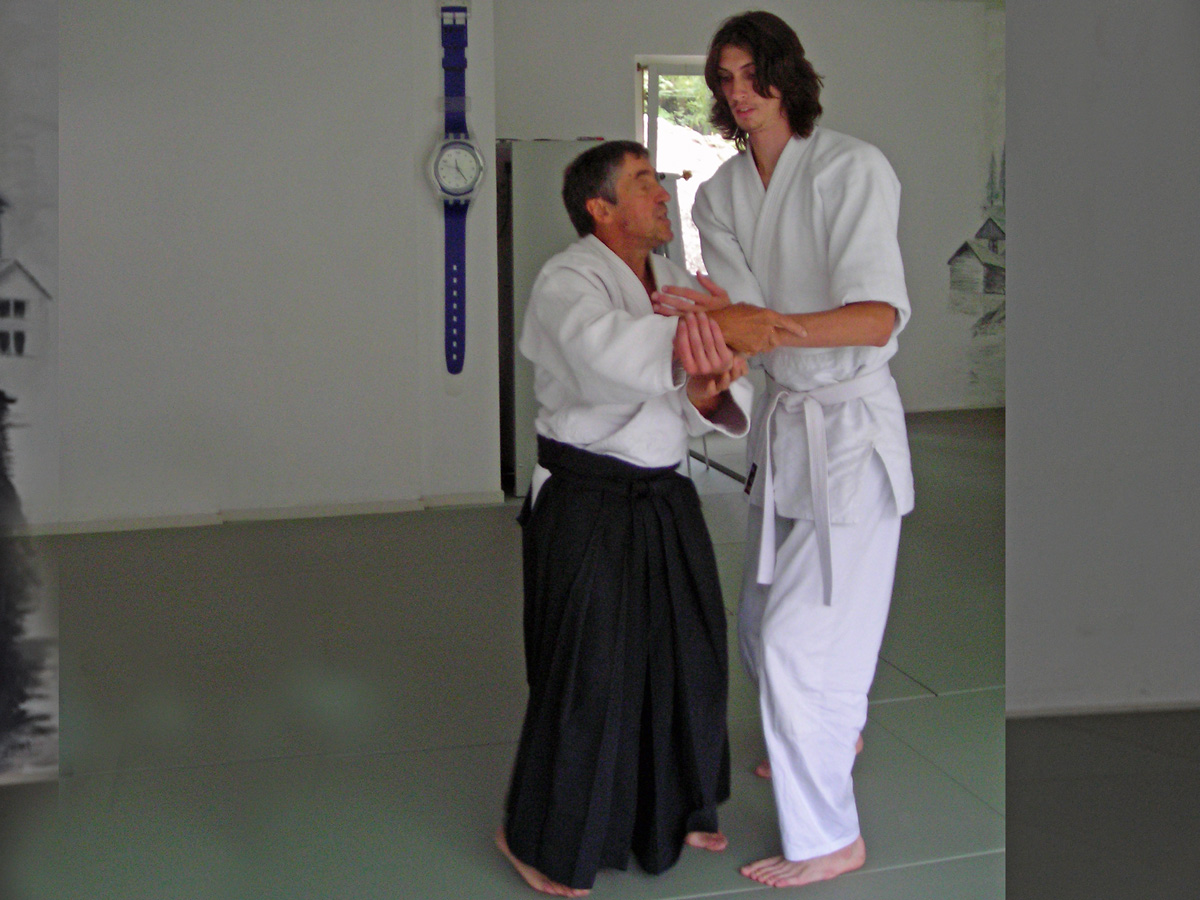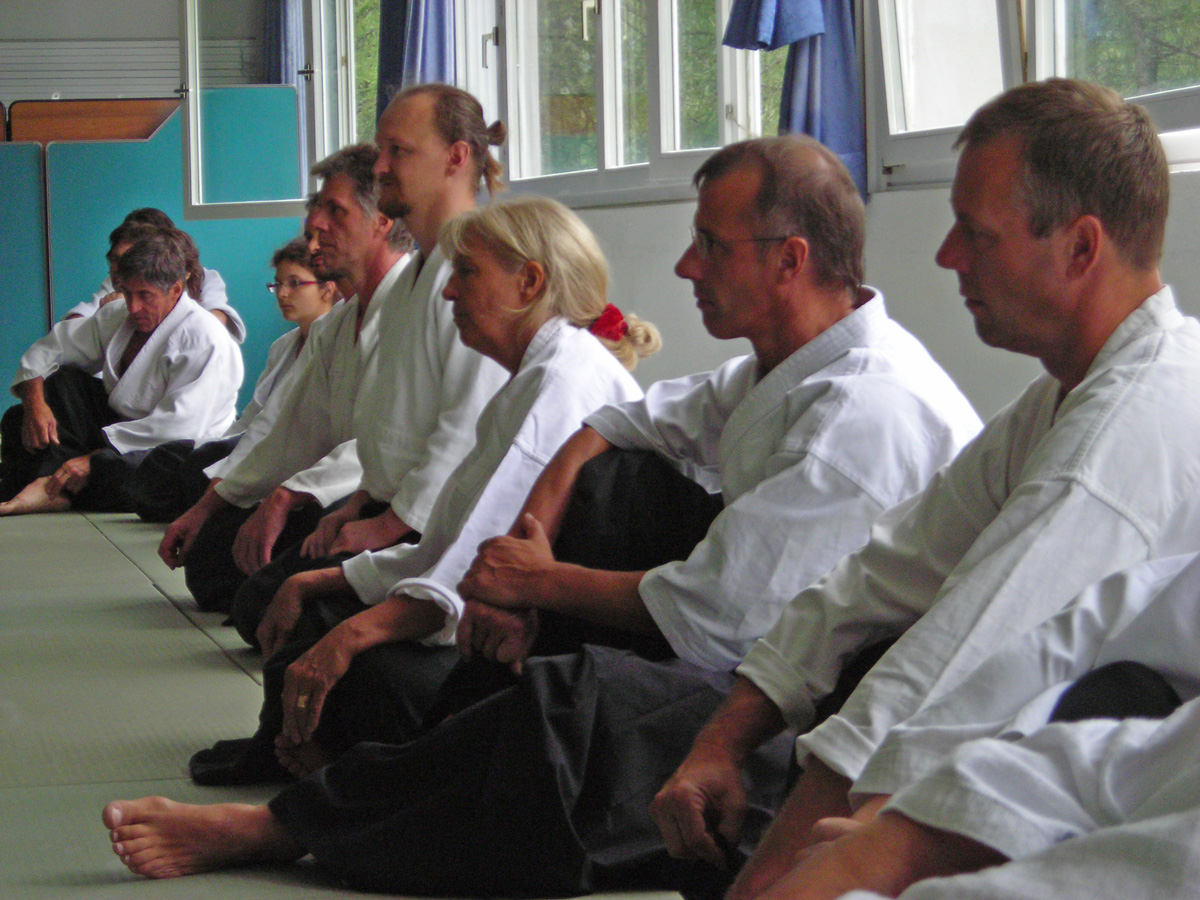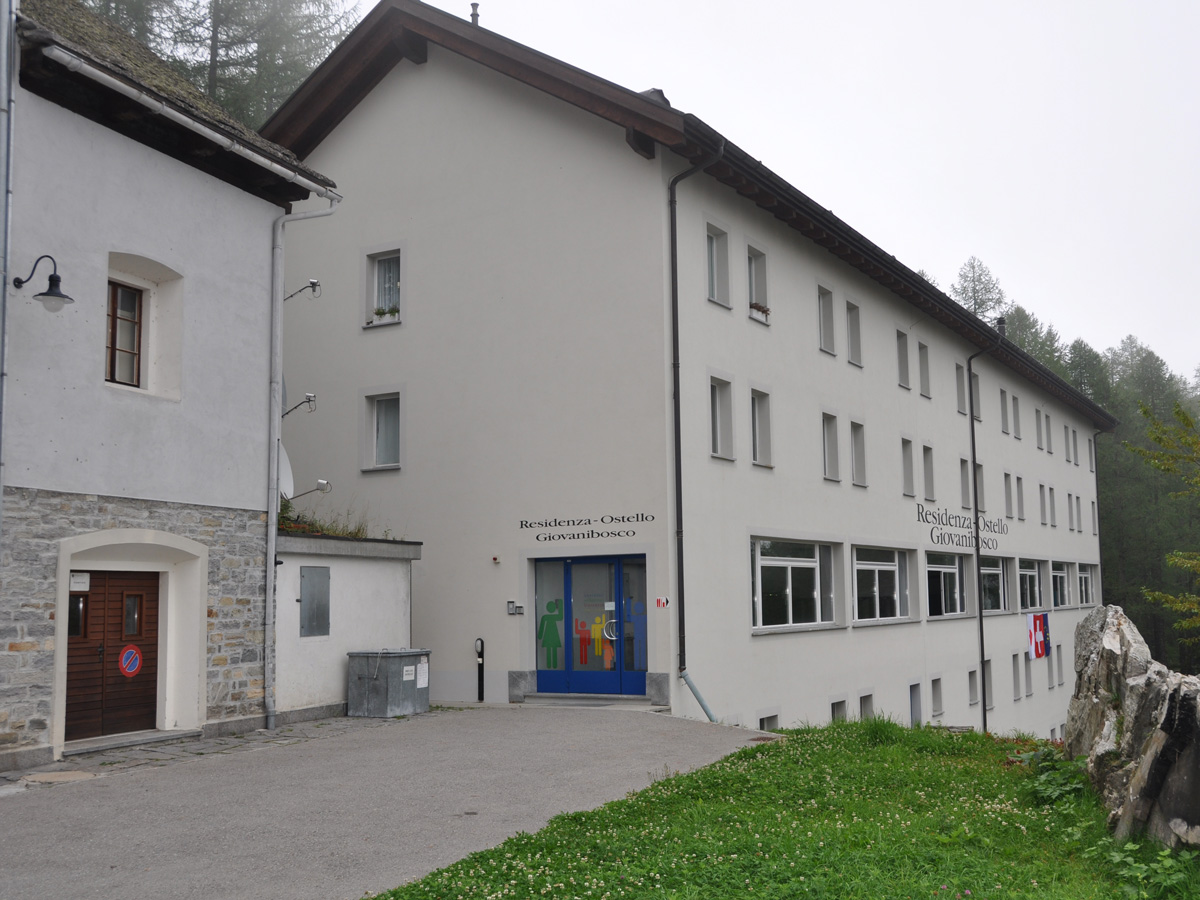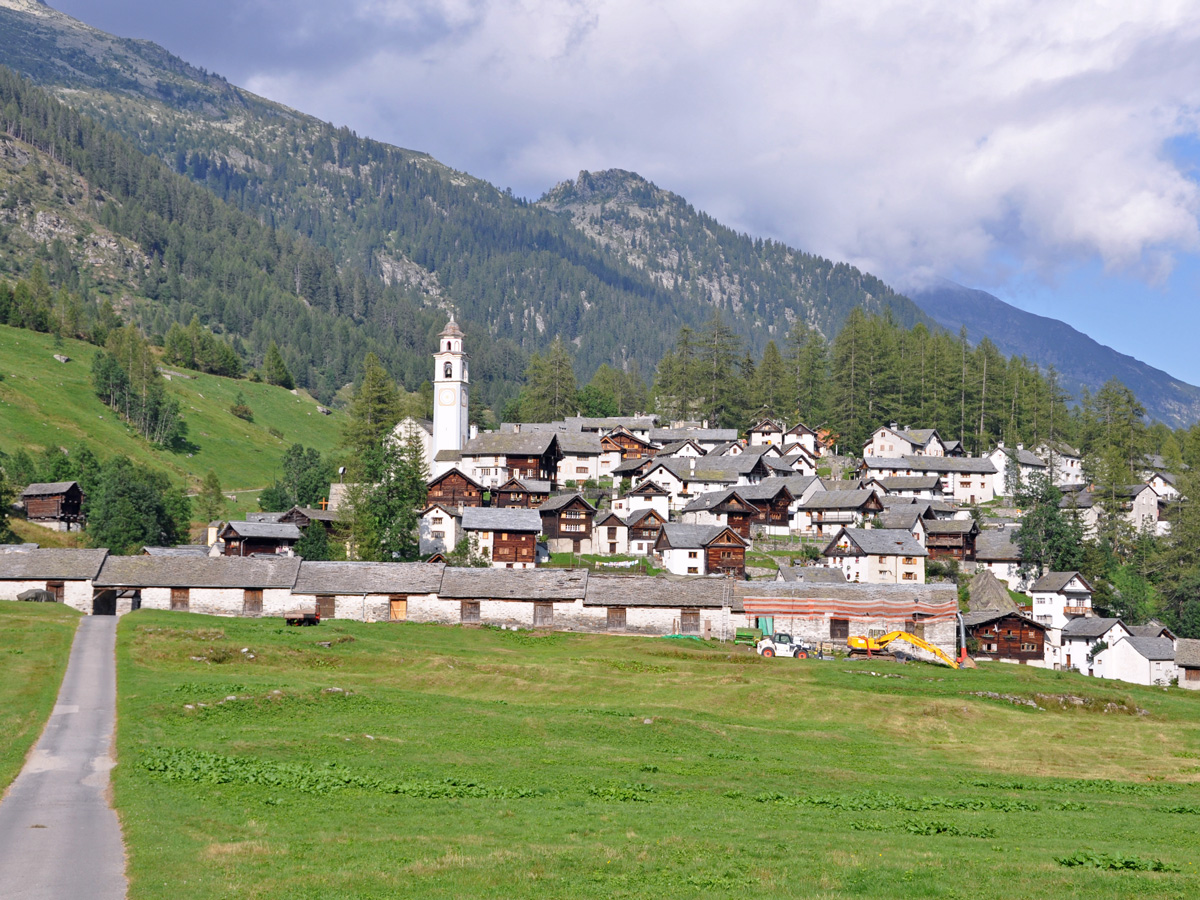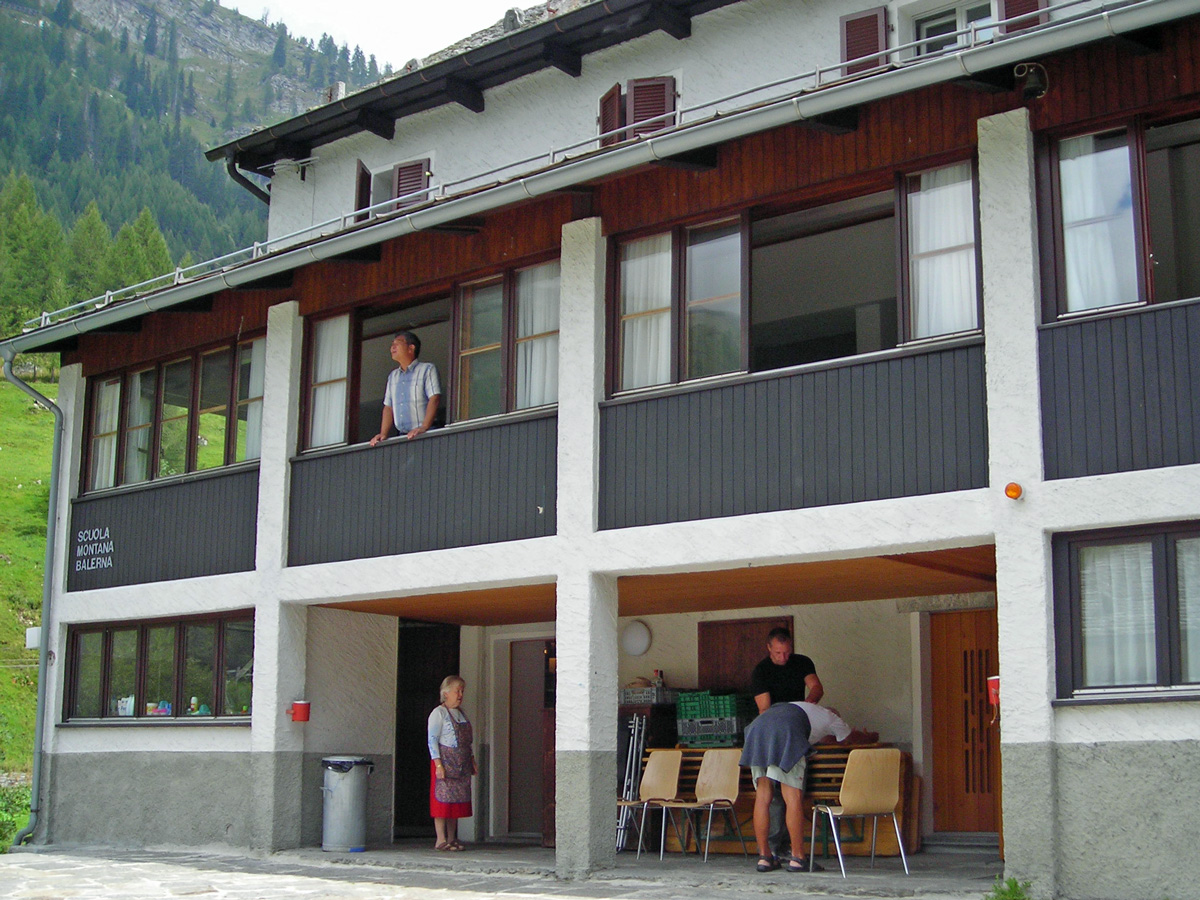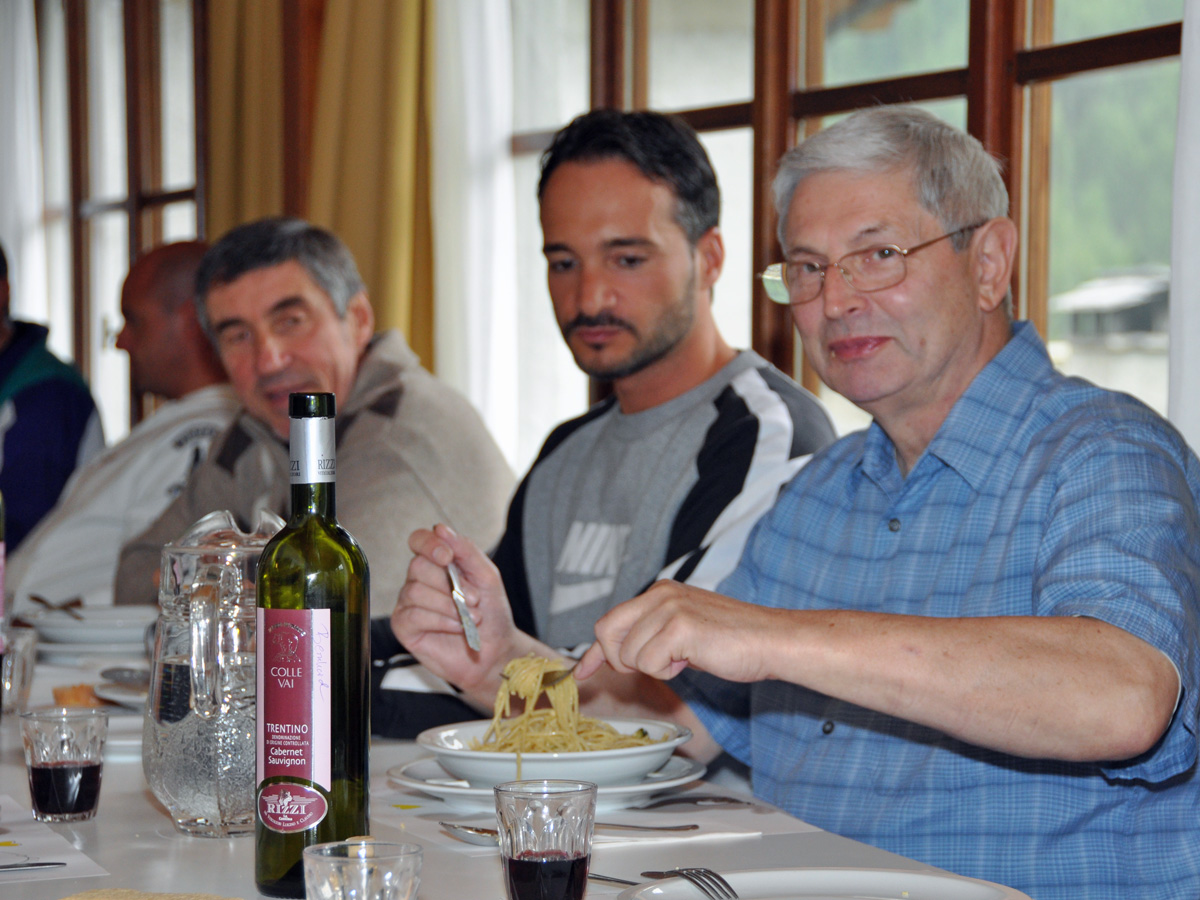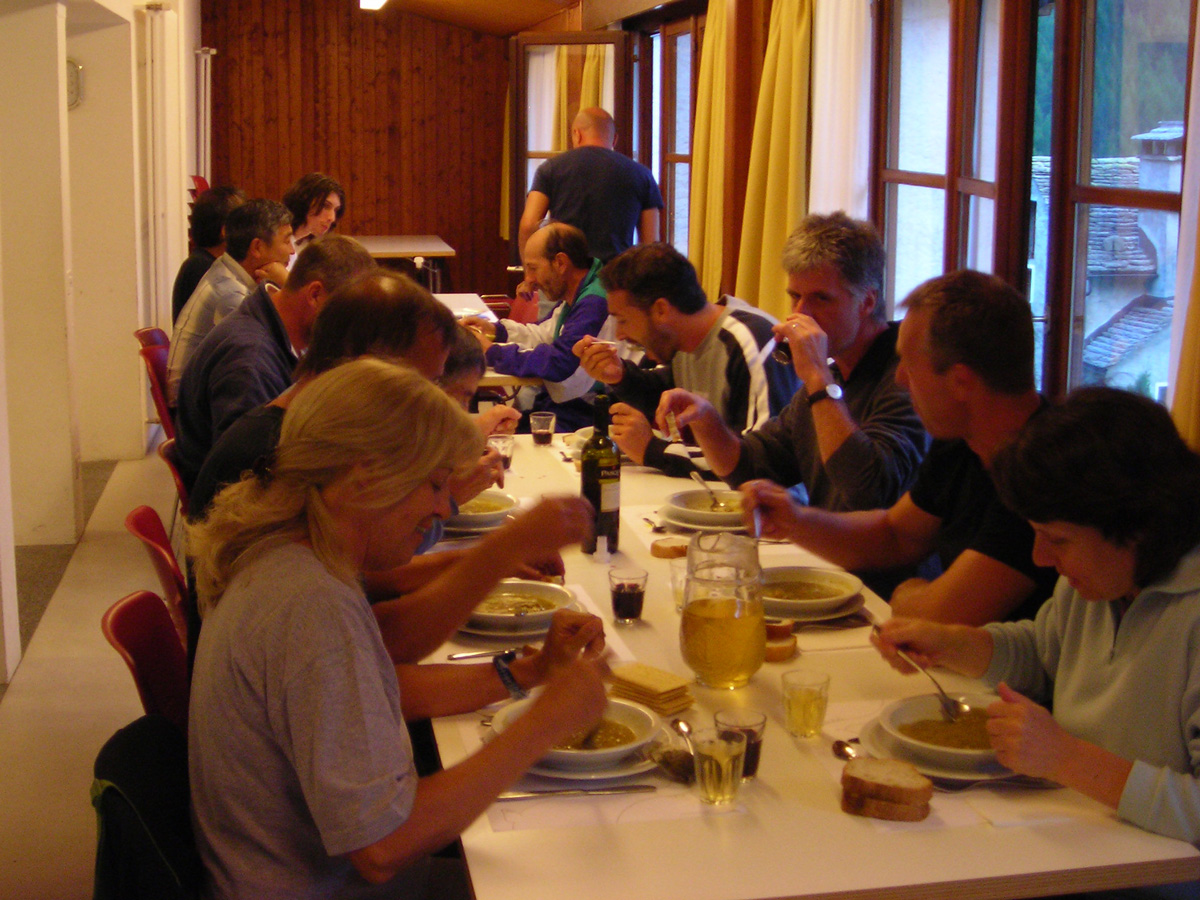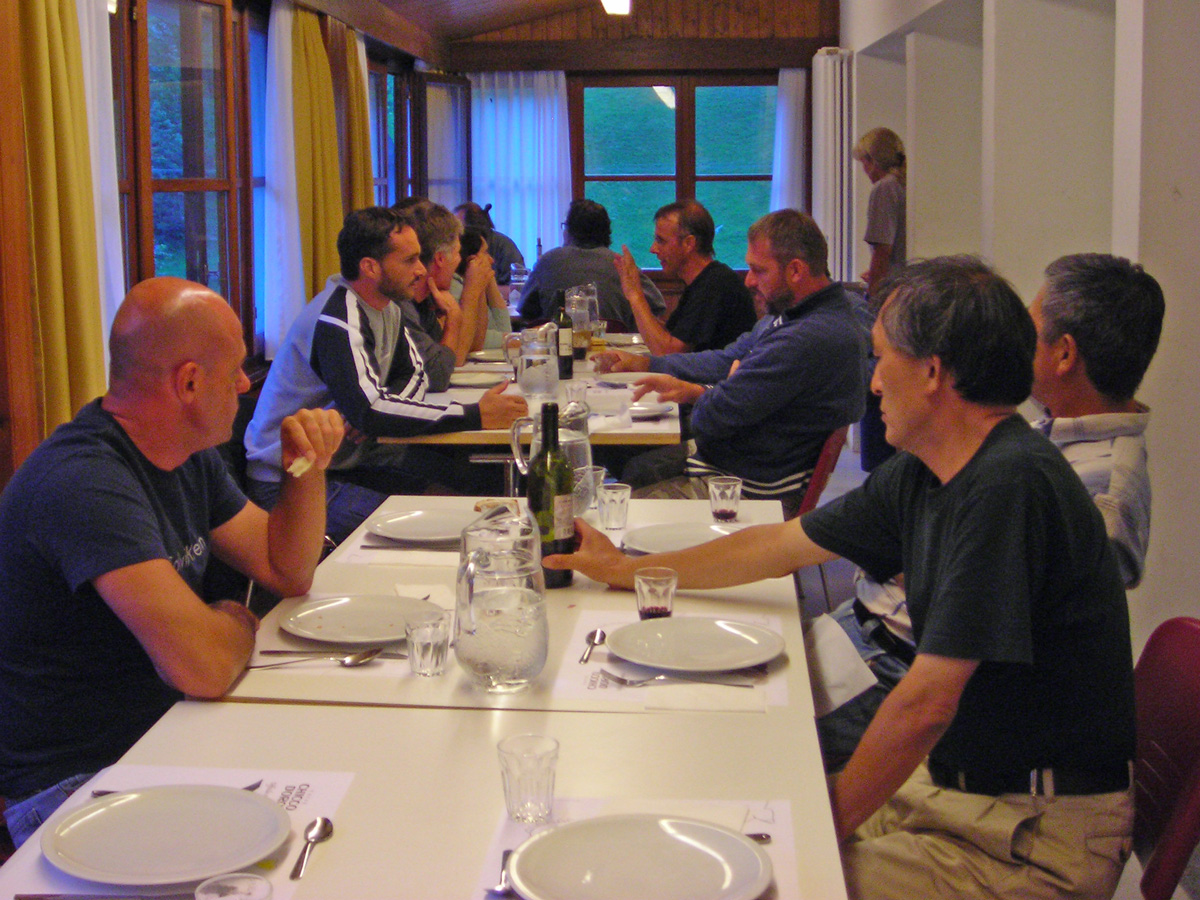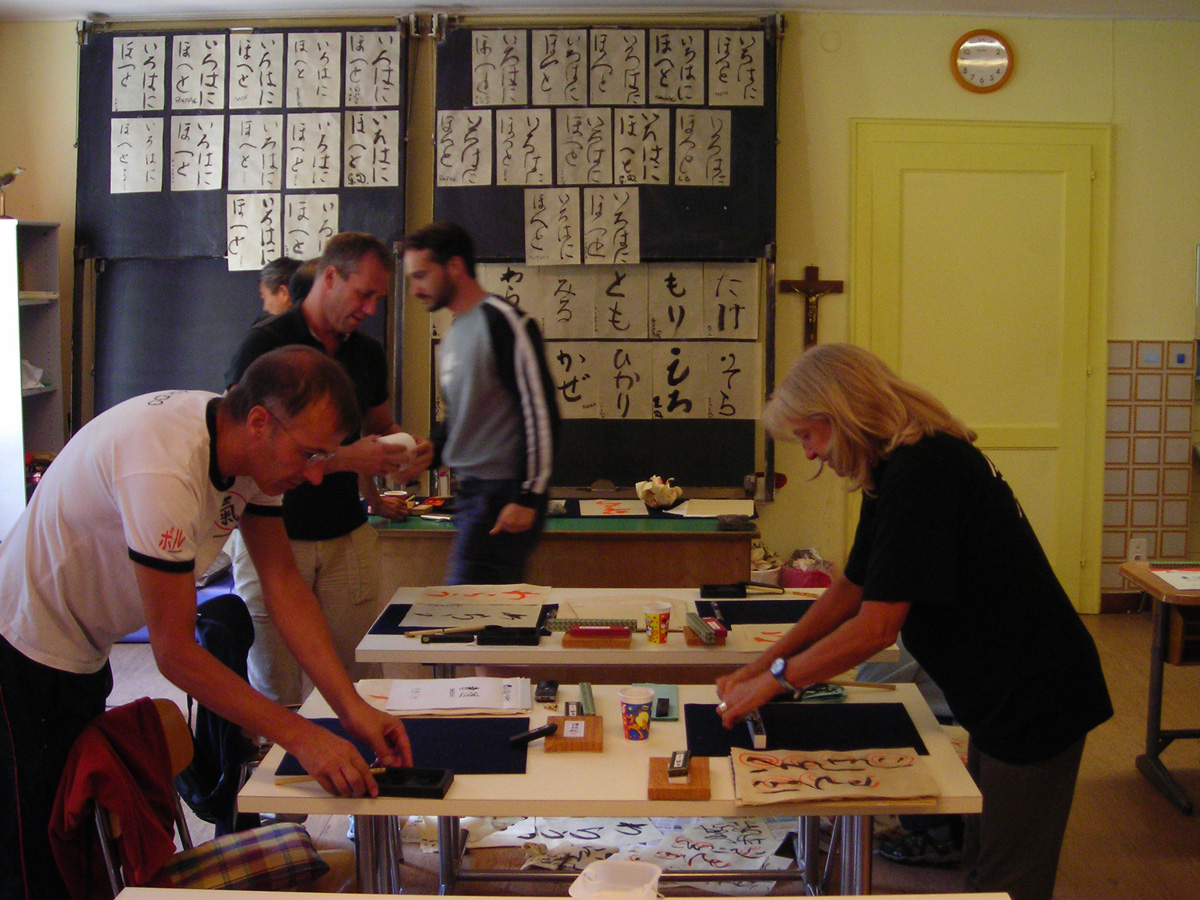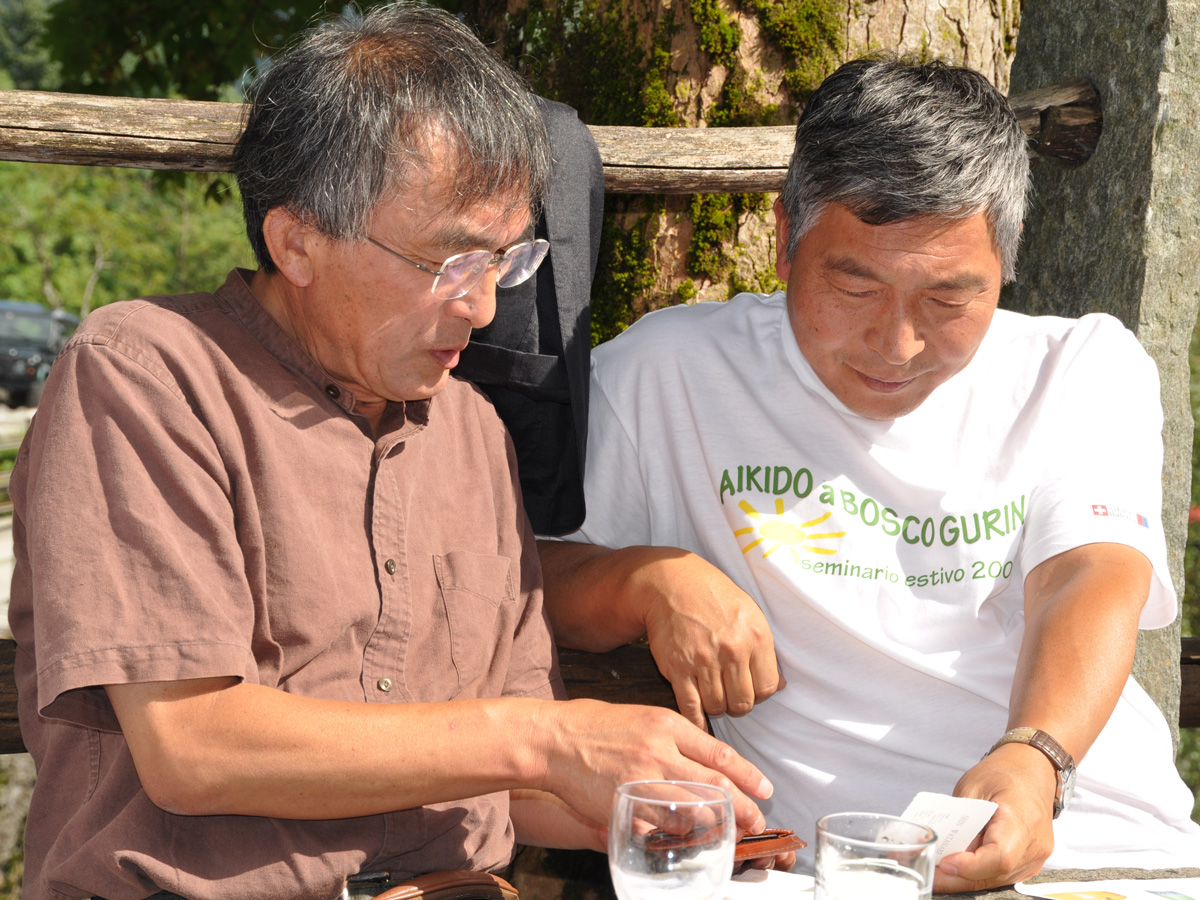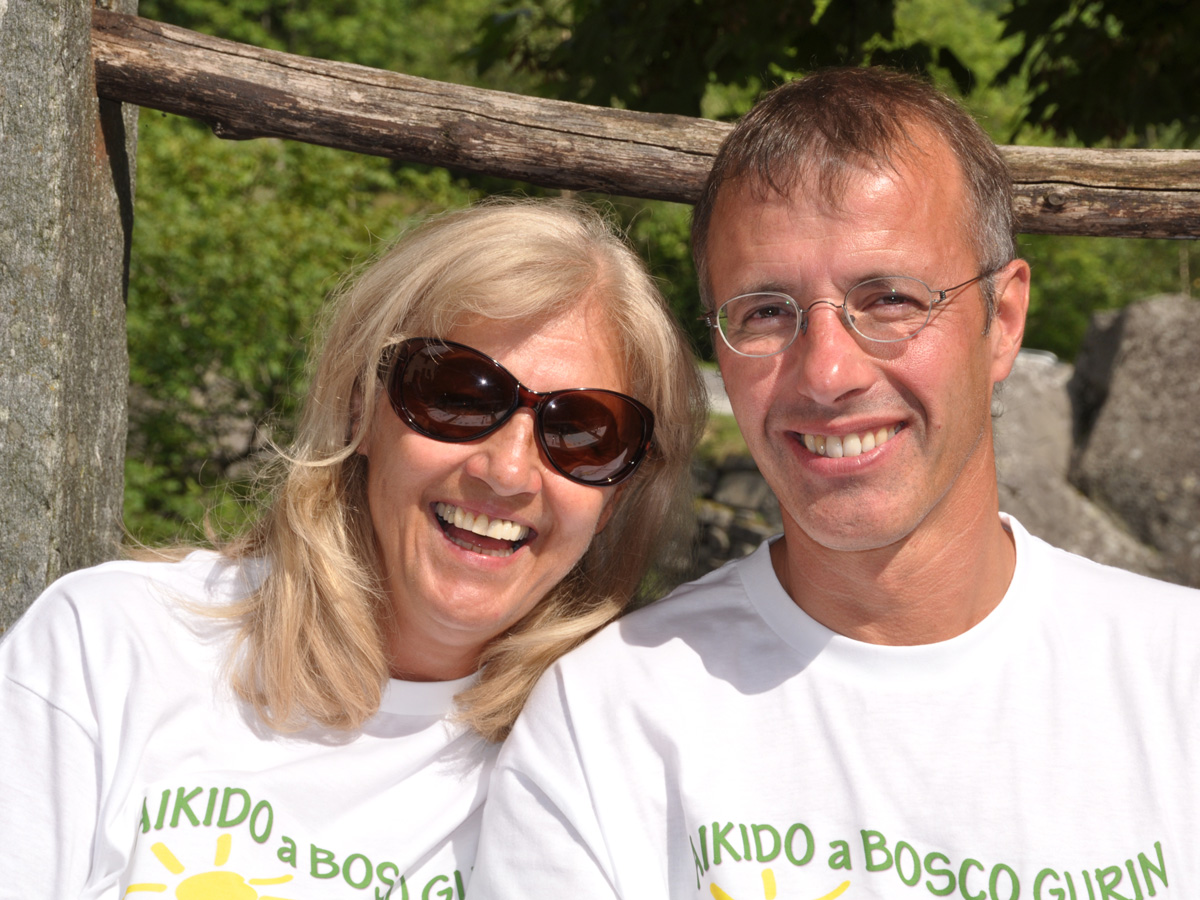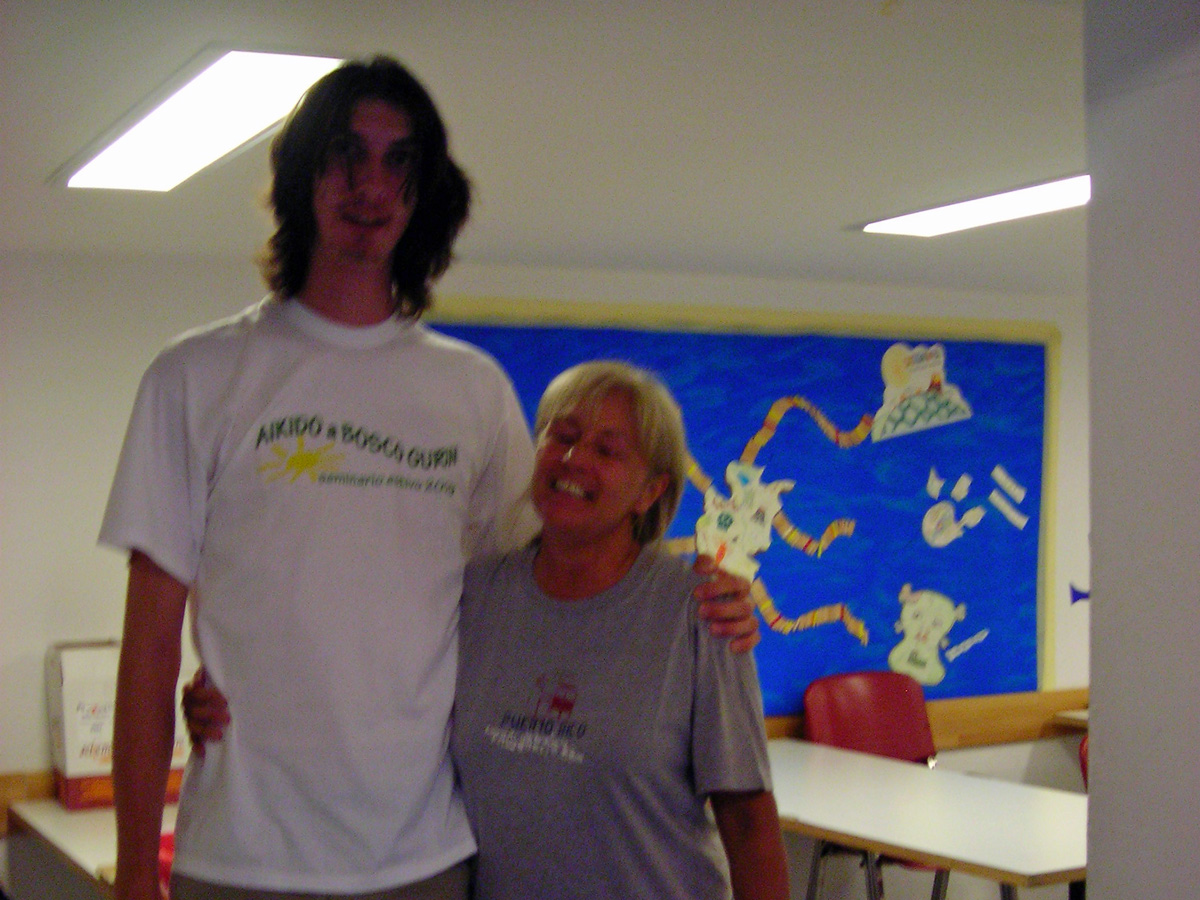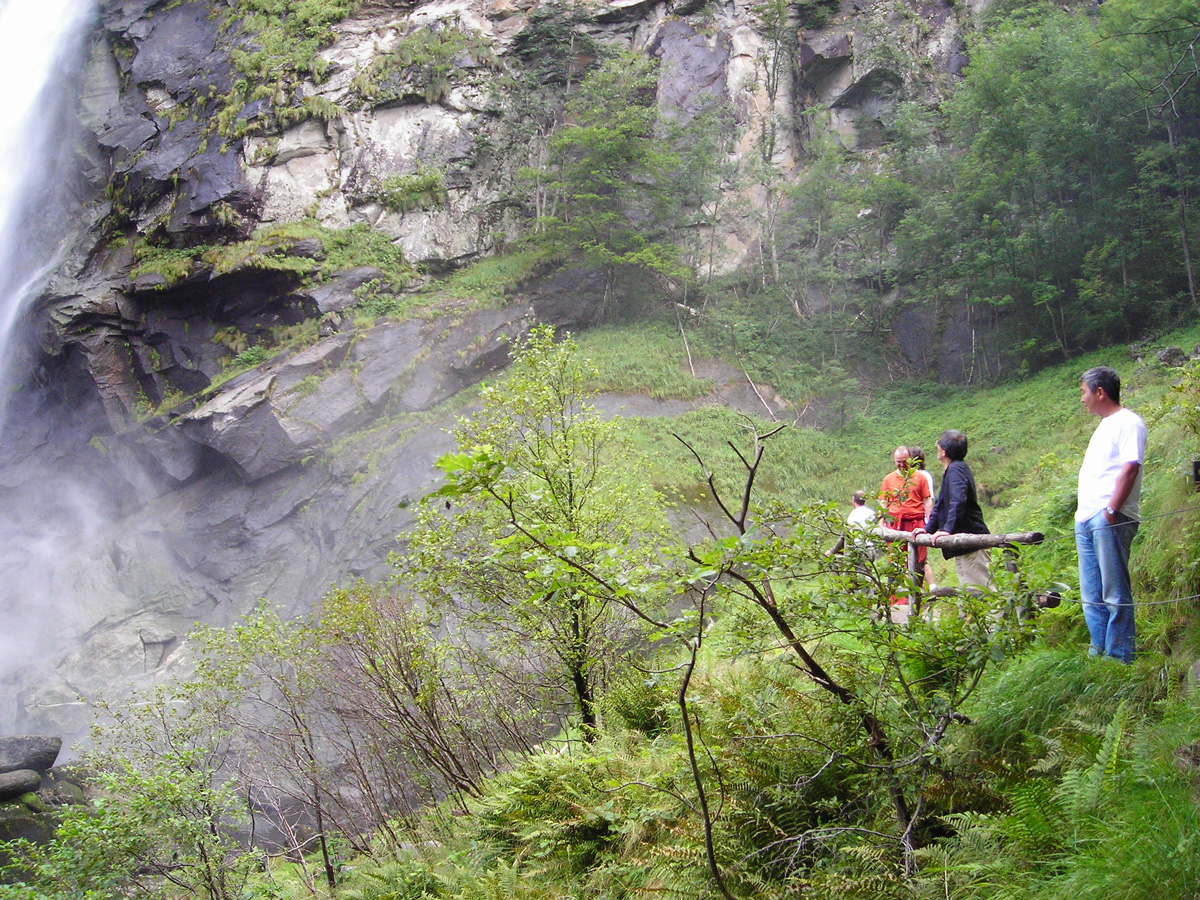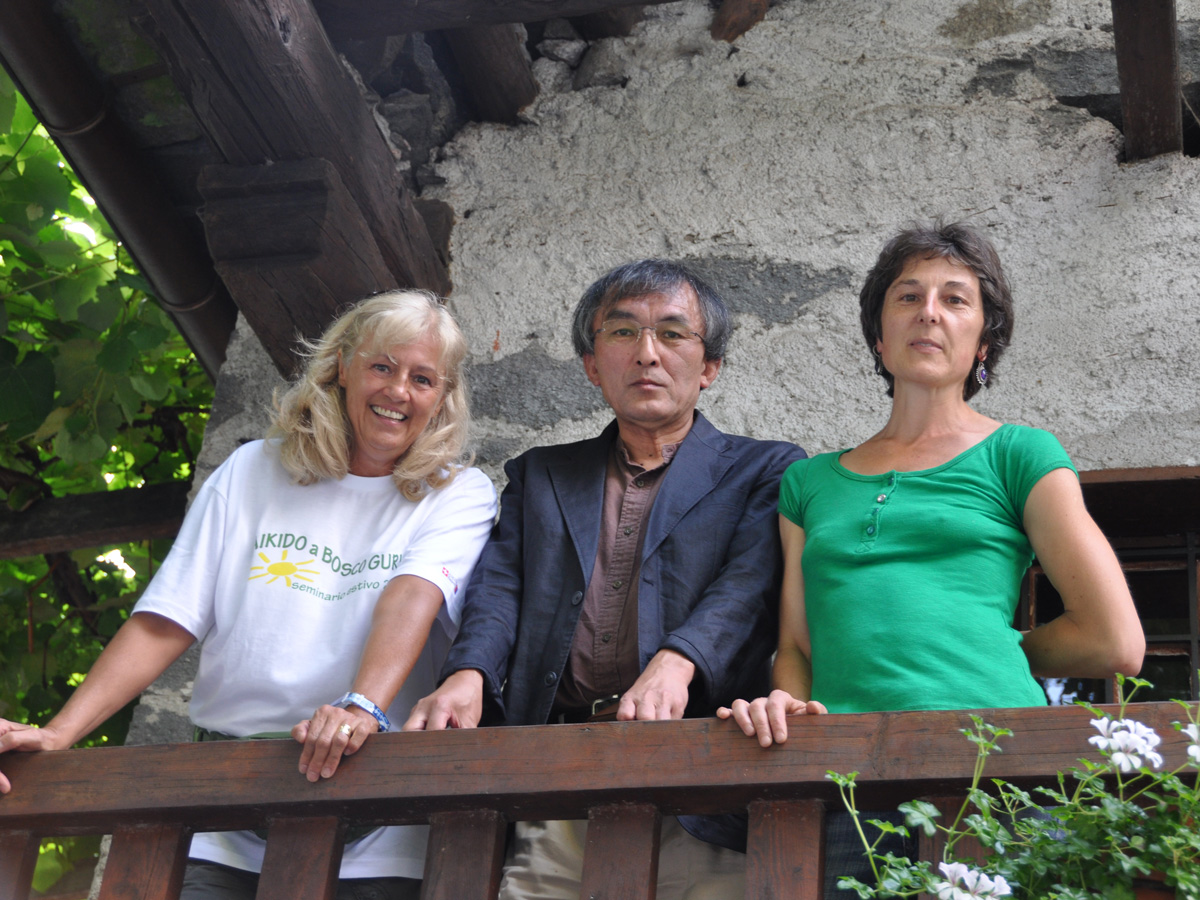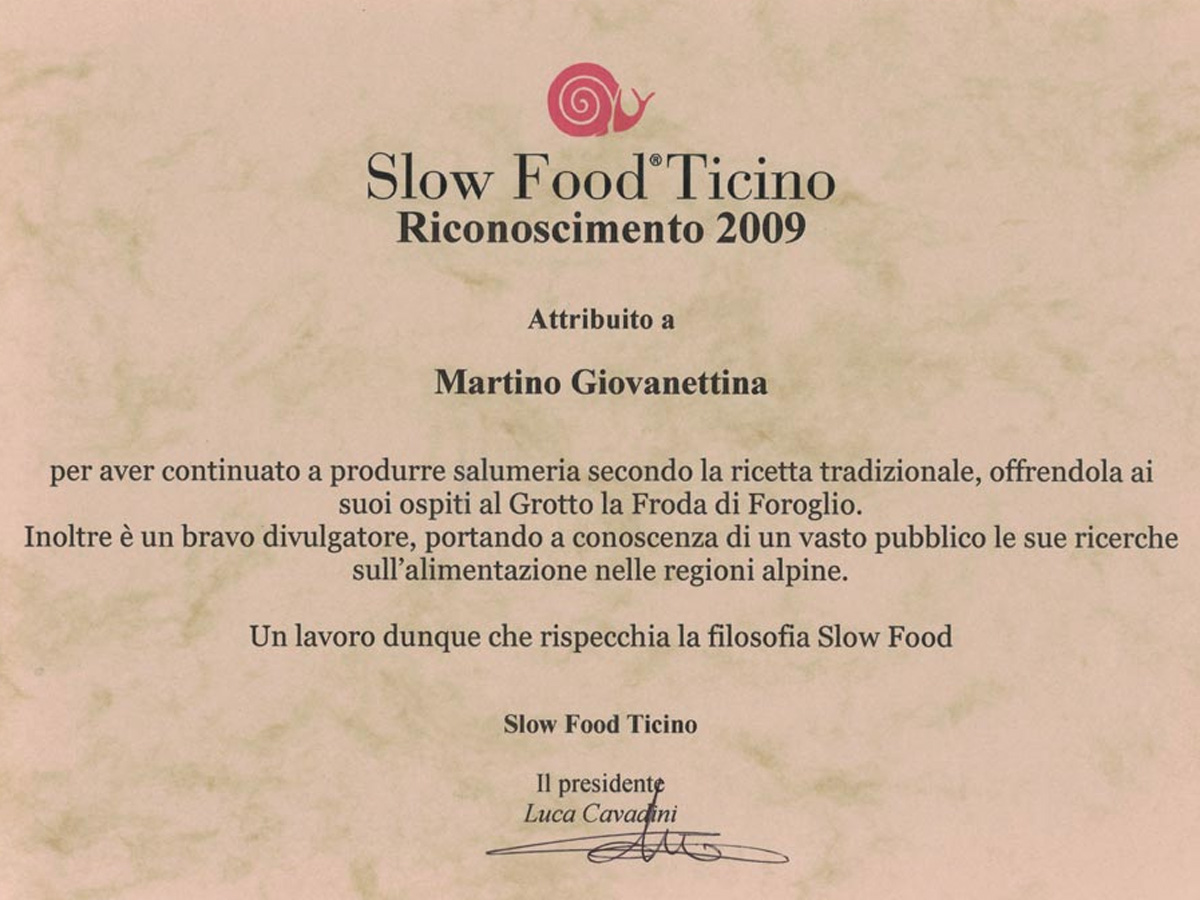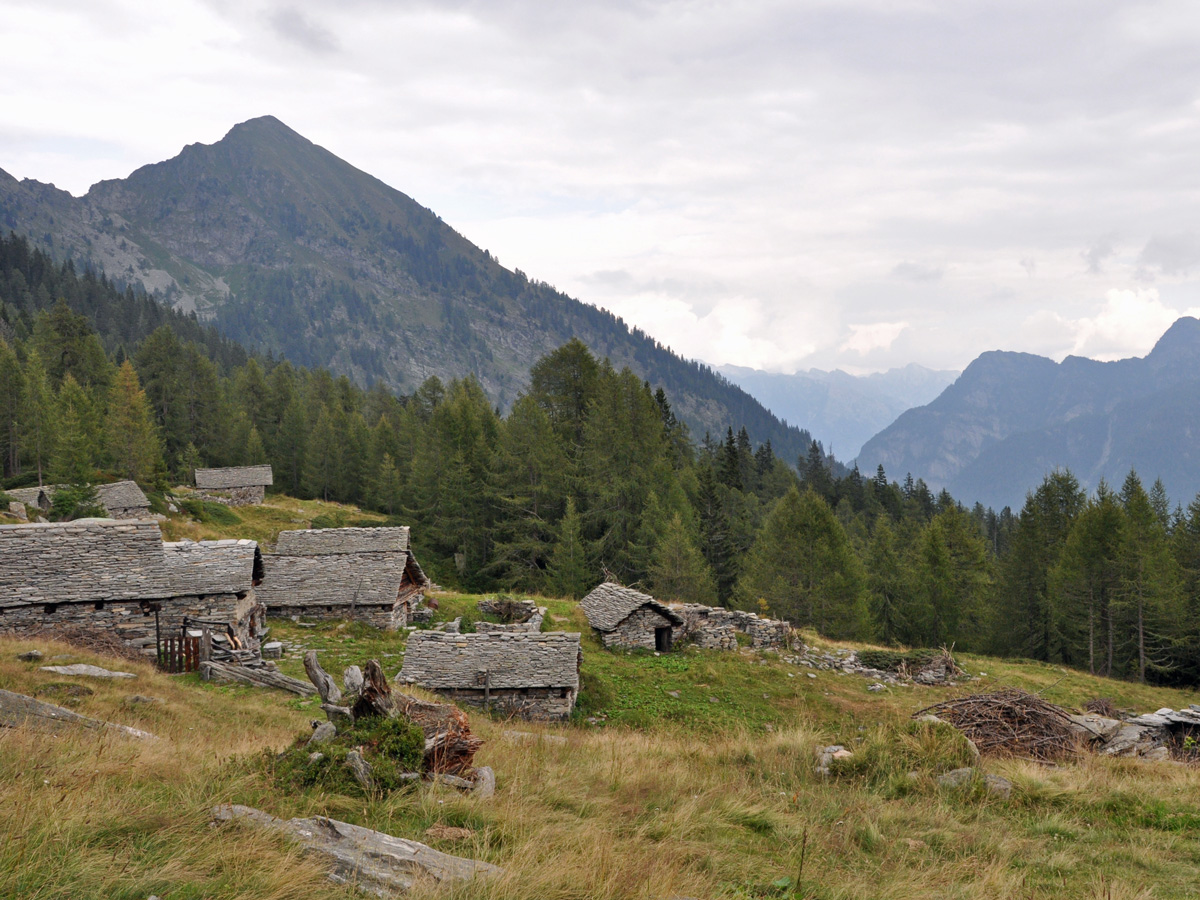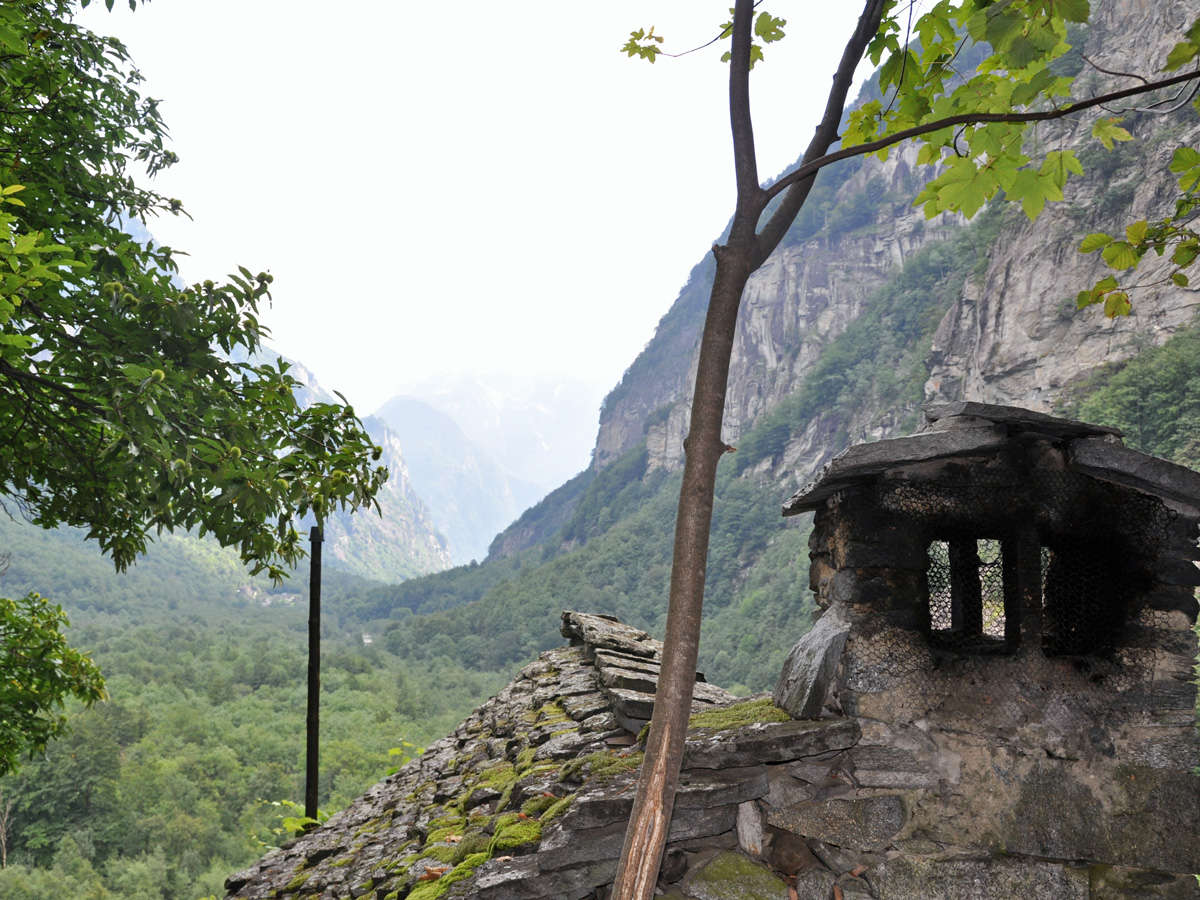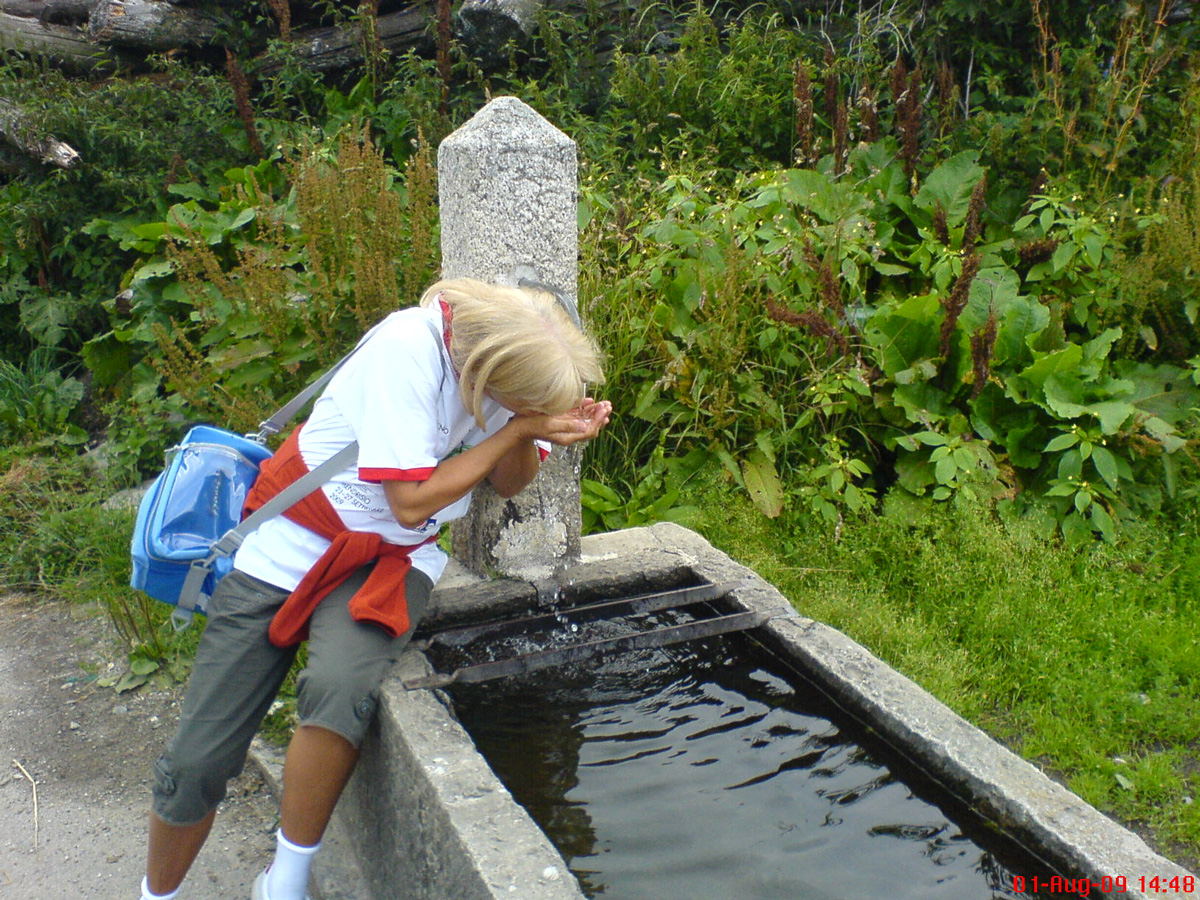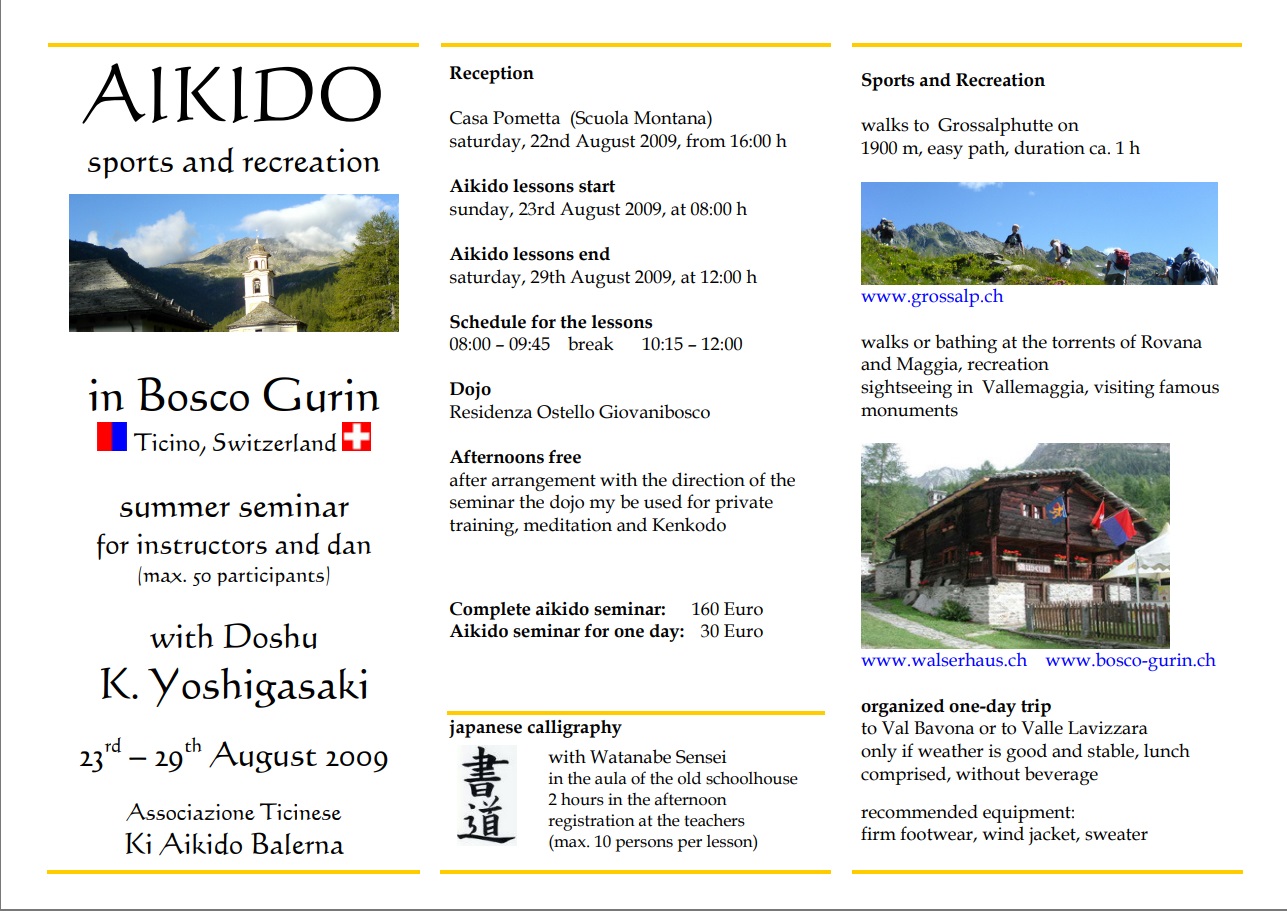
Summer seminar
Under the title "Aikido – Sport and Recreation," the Ticino Ki Aikido Association from Balerna had already organized two summer seminars in Bosco Gurin (Upper Ticino) in 2007 and 2008. The first time Bruno Maule and Maurizio Volpe taught together. The seminar was a great success (
Report). The second time, in August 2008, the organizational and content-related wishes and needs of the Balerna Dojo for the event became more clear. In October 2008, they managed to secure Yoshigasaki Sensei as a teacher for this event during his seminar in Balerna.
The concept remained the same: misogi and aikido in the morning, and free afternoons for mountain hikes, sunbathing, excursions, other courses, or free training.
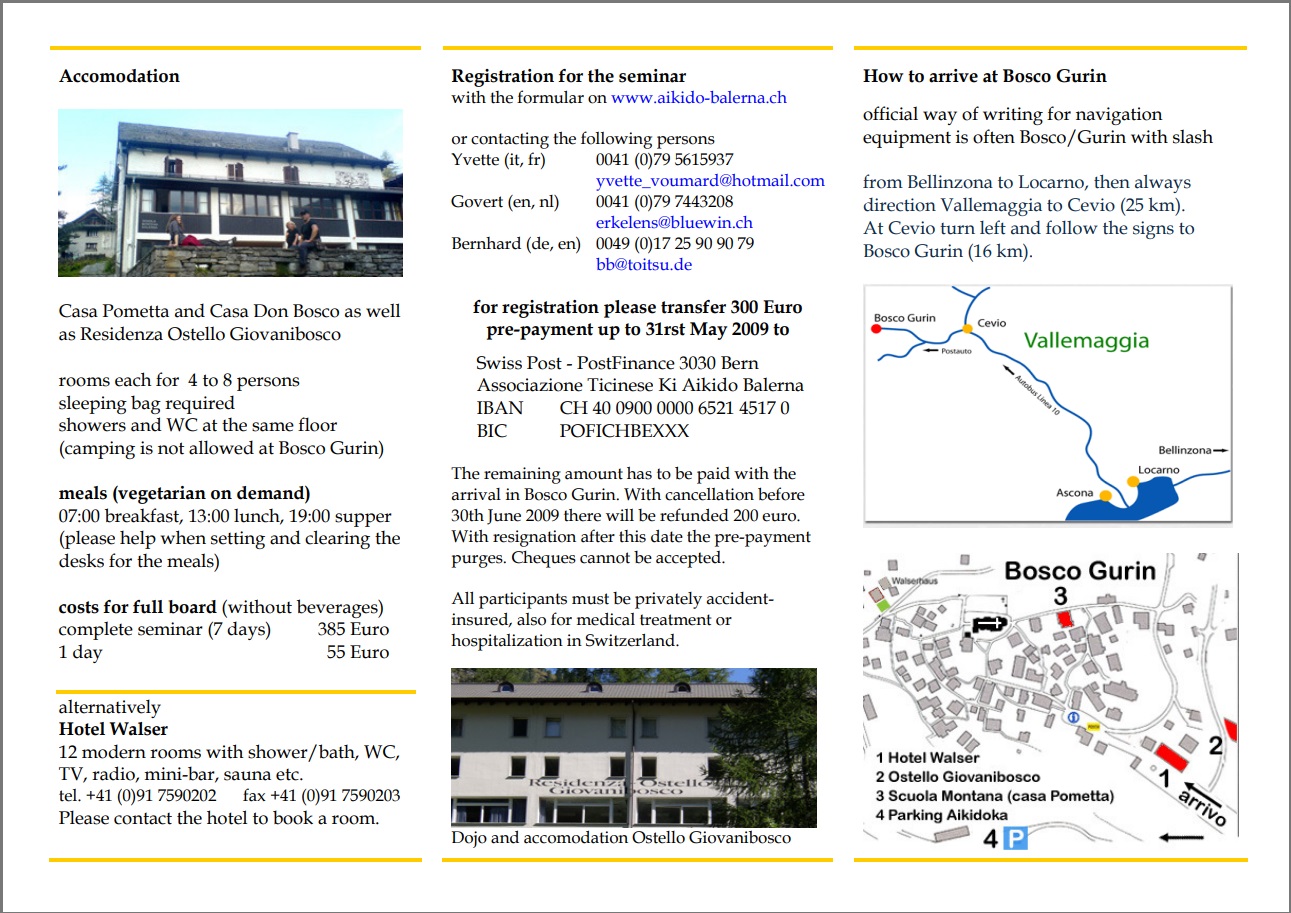
Participants
In order to limit the number of participants sensibly and to make intensive use of the week, the event was designed as an intensive seminar for Dan and teachers. Only committed Kyu grades from the Balerna Dojo were allowed to participate, provided there were still places available.
Accommodation was provided by the two houses belonging to the municipality of Balerna in Bosco Gurin, which are used as a school camp (Scuola Montana).
Those who could afford it, stayed at the Hotel Walser at the entrance to the village. Full board was provided by the Scuola Montana team at the Casa Pometta. To make the meals more substantial, large quantities of vegetables, trout from Ticino's high alpine lakes caught by a fellow angler, wine, juices, and other delicacies were purchased in advance in the valley.
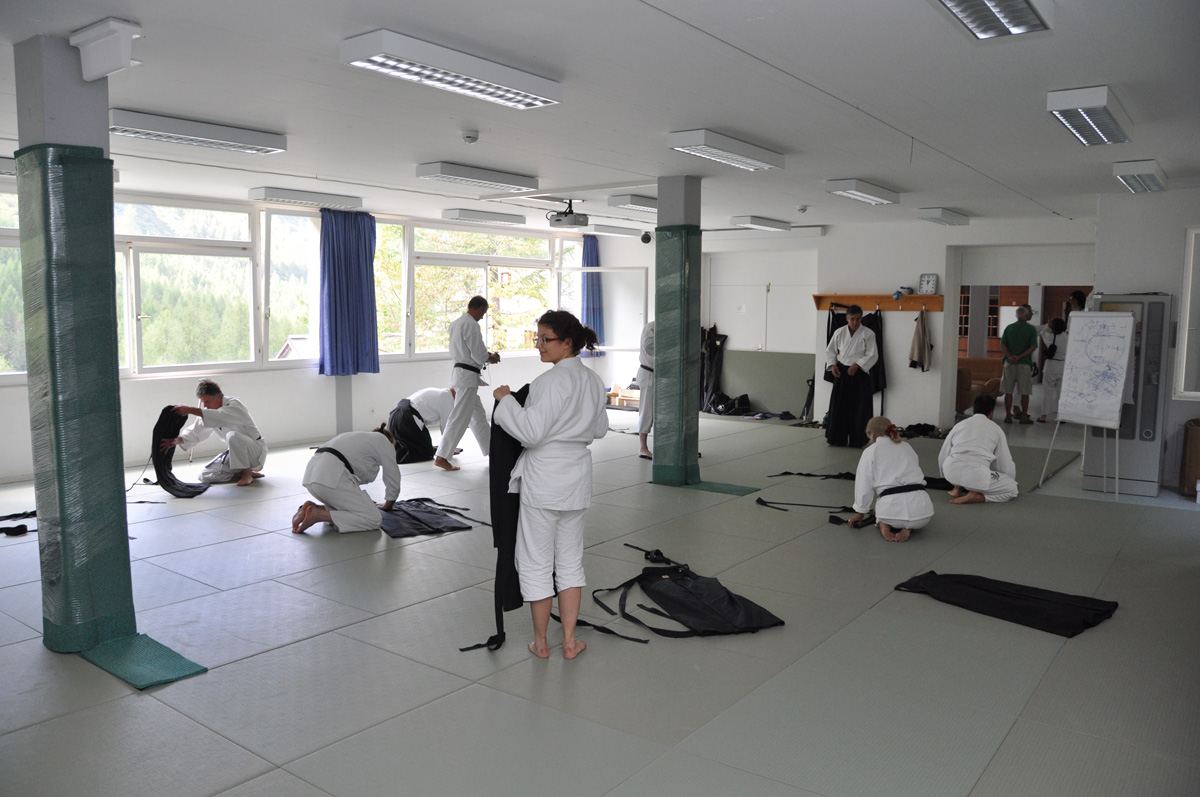
Dojo
The dojo, the training location, remained in the Ostello Giovanibosco building. This structure primarily serves as mass accommodation for young skiers. It was built by Giovanni Frapolli, who also owns the Hotel Walser and built the ski facilities in Bosco Gurin.
First, the tables and chairs from the large dining room had to be moved to the anteroom. Then everything was cleaned, and then the 160 m² of tatami, which had been transported an two-hour journey from Balerna to Bosco in a van with a trailer, were laid out.
The ceiling height of the room might be somewhat higher for bokken and jo techniques, so in good weather, the practice was carried outside. The two pillars are always carefully padded and do not pose a major obstacle during practice.
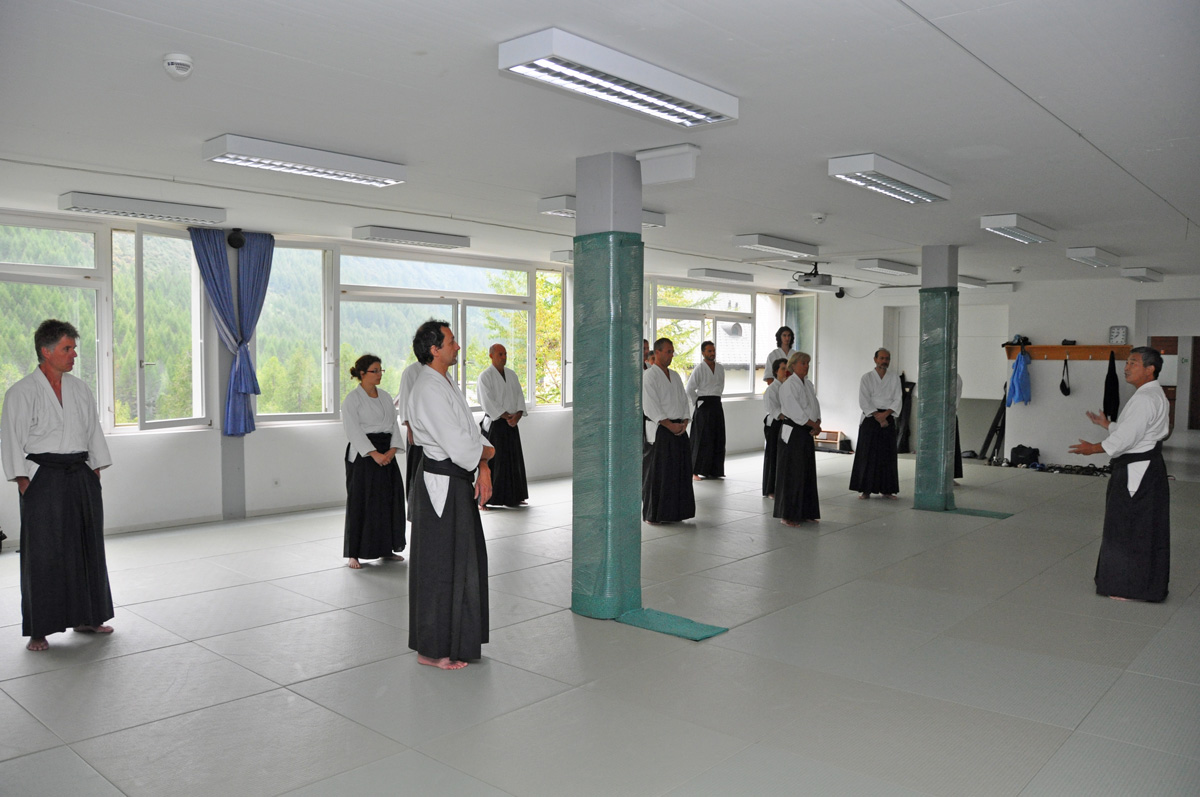
Lessons
Since the entire seminar was intended for teachers and Dan, Yoshigasaki Sensei taught as he would in his instructor lessons. This applies to his philosophical explanations and the technical subtleties he imparted to us.
Some excerpts from his lessons can be found on this website in various blog posts.
The technical program, which he explained very systematically and in detail, included, among others, Tsuzukiwaza 1, 2, 3, 4, 11, 12, 13, 14, 16, 25, and 29.
The video recordings of this seminar, kindly recorded by Rafal Kowalski, were prepared by Bernhard after the seminar and made them available to the participants on two DVDs, along with many photos. This allows teachers to work on the content at home for their own teaching.

Jo and Bokken
Yoshigasaki had the participants practice jo and bokken on the forecourt in front of the dojo. In the fresh air, with a view of the surrounding 2,000-meter mountains and in the pleasant shade, the participants were able to work well.
Yoshigasaki explained many well-known techniques and, among other things, also had a modification for bokken 2 with bokken 2 ready:
At the beginning, uke demonstrates how to attack nage with an intelligent shomenuchi followed by a tsuki. This causes nage to take a step back. This makes the kata more spatially centered than in the previous form.
The residents of Bosco Gurin who happened to be passing by on their way to the municipal office were sometimes amazed by the people in the strange black and white clothing, like penguins.
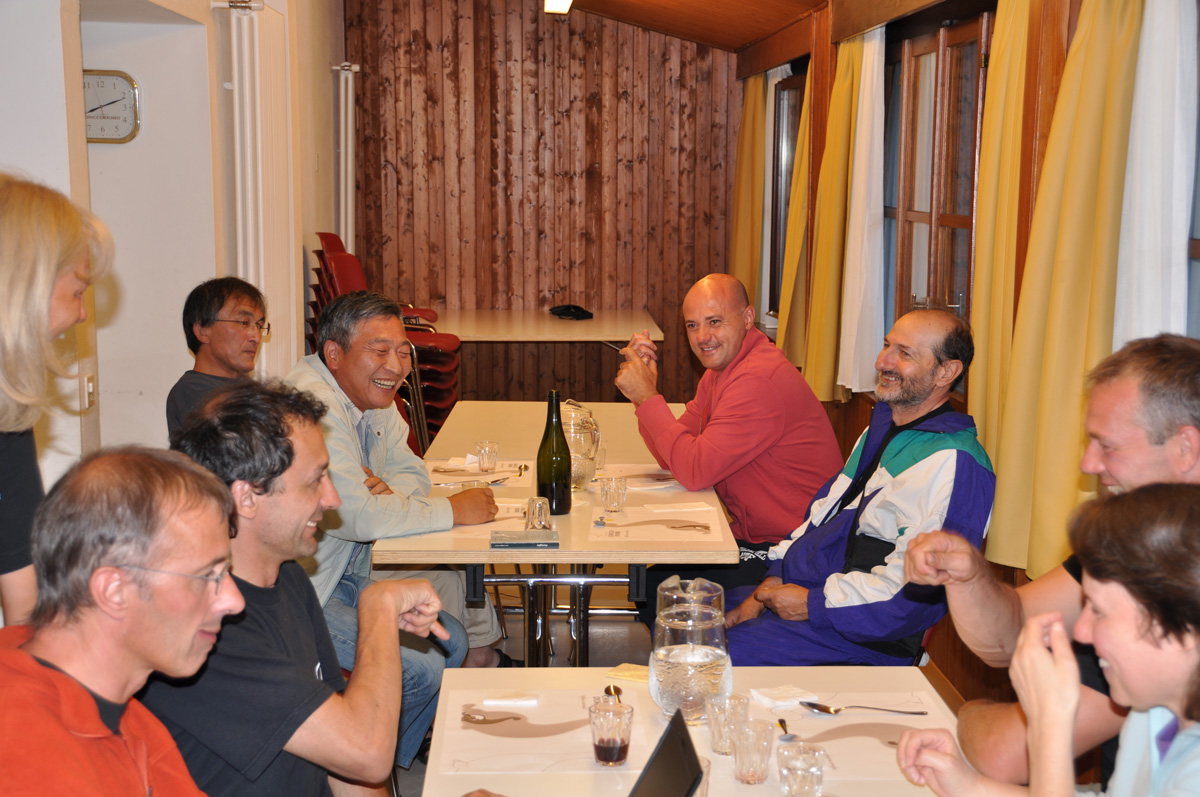
Casa Pometta
Most participants stayed overnight at Casa Pometta, where the dining hall is also located. All meals were planned in detail by Yvette and, with the additional ingredients (see above), were far superior to the standard of a school camp.
There were set menus for lunch and dinner, which helped ensure everyone was always well-fed. Those who wanted could tap good wine from the 5-liter containers, which Yvette and Bernhard had brought back in abundance from France in occasion of the seminar with Yoshigasaki Sensei in Plan d'Aups.
In the evenings, a participants often gathered in small groups in the dining hall for informal conversations, as in the photo.
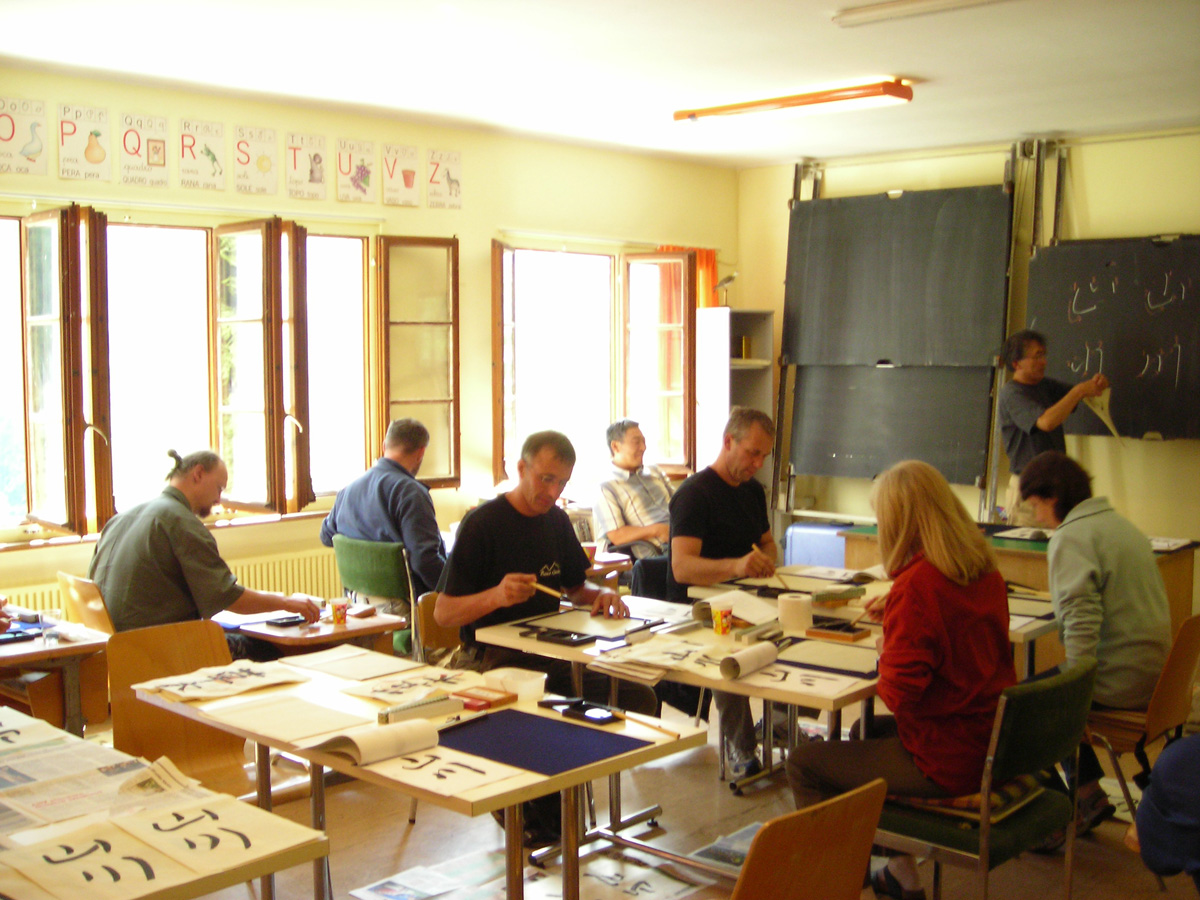
Shodo - Calligraphy
Yoshigasaki Sensei brought his brother-in-law, Shin Watanabe Sensei, with him. He is a master calligrapher and also writes our Dan certificates.
He offered a Shodo course every afternoon, which most participants attended. It took place in the classroom of the old school above the community office, i.e., right next to the dojo.
Watanabe Sensei taught in English, and Yoshigasaki watched the lessons, sometimes amused. Watanabe Sensei explained the different styles of Shodo and had practice typical kanji or, for example, write the famous poem "i-ro-ha" in hiragana. Everyone was also asked to write their name using kanji that sounded somewhat like their name and had a pleasant meaning.
At the end, the participants could purchase calligraphy sets with brushes, ink stones, mortars, and the corresponding paper from Watanabe Sensei at a reasonable price. When you felt the weight of this equipment, you wondered how he had brought it all to Europe.

Mountain Tours
Some participants took advantage of their free afternoons to embark on extended mountain hikes, such as Ronny from Haigerloch with his daughter Helena.
An easy tour leads from the village at 1500 m to the Grossalphütte at almost 2000 m. There is a steeper footpath, but also a much longer road for agricultural use, which is, however, more comfortable. The Grossalphütte has a restaurant and invites you to take a break with good food and drinks.
Above 2000 m, there are very beautiful tours, even with views of the Val Formazza. This is the neighboring Walsertal, which is in Italy. It's about 6 km as the crow flies; by car, it's over 100 km and takes more than 2 hours.
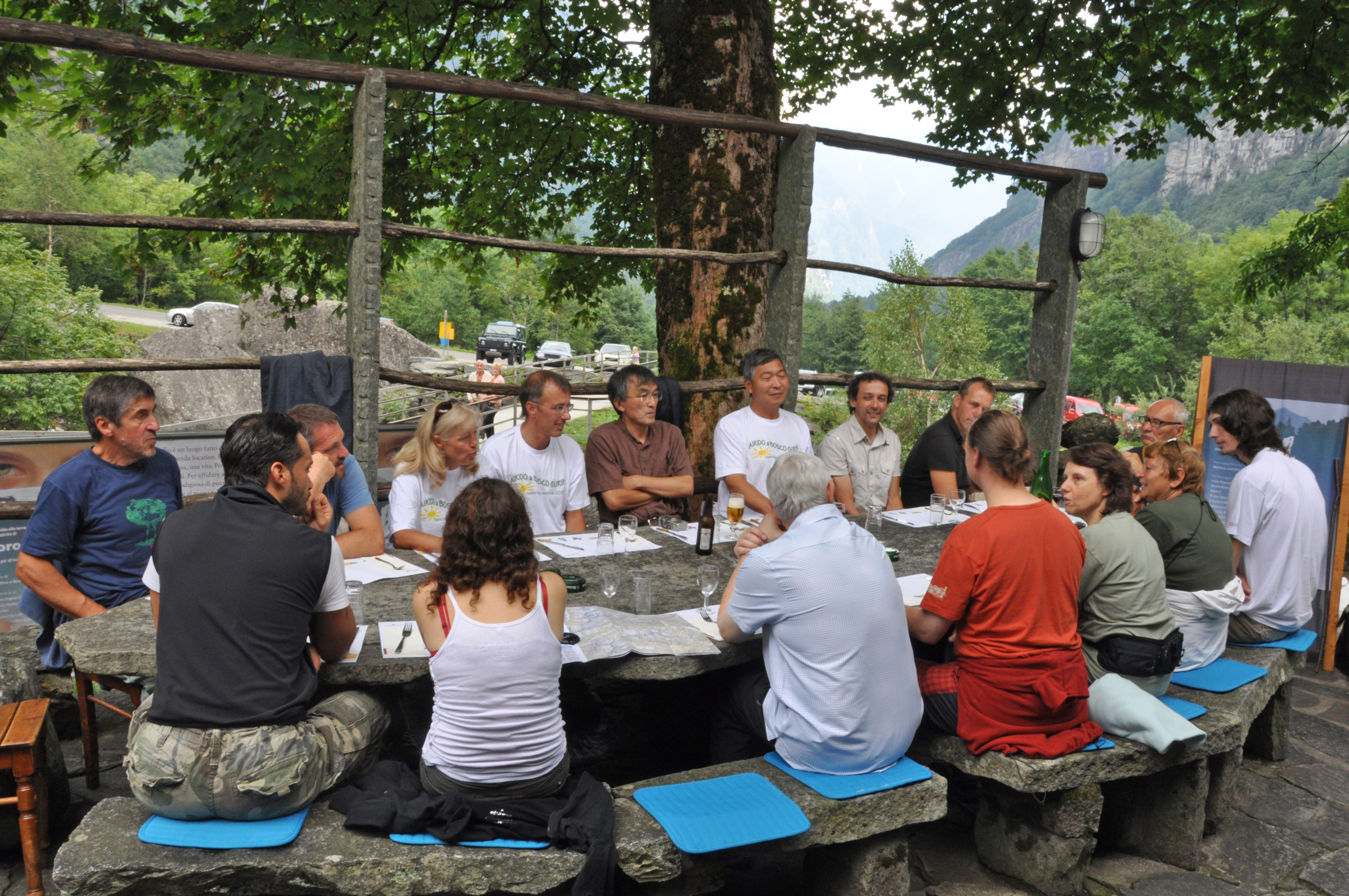
Foroglio
On Wednesday, after misogi and breakfast, most of the participants set off for the planned tourist excursion to Val Bavona.
In Foroglio, they visited the impressive waterfall. It is considered the most beautiful waterfall in Ticino, although it seems nothing unusual by Japanese standards.
Then, in a cheerful atmosphere, they enjoyed good food and drinks at the La Froda restaurant. This year, the restaurant received an award for its cuisine from the Slow Food organization.
When the manager learned that Watanabe Sensei, an artist from Japan, was on board, a special photo was taken. La Froda has a vibrant artistic scene during the season. Art exhibitions and jazz concerts with well-known artists take place regularly.
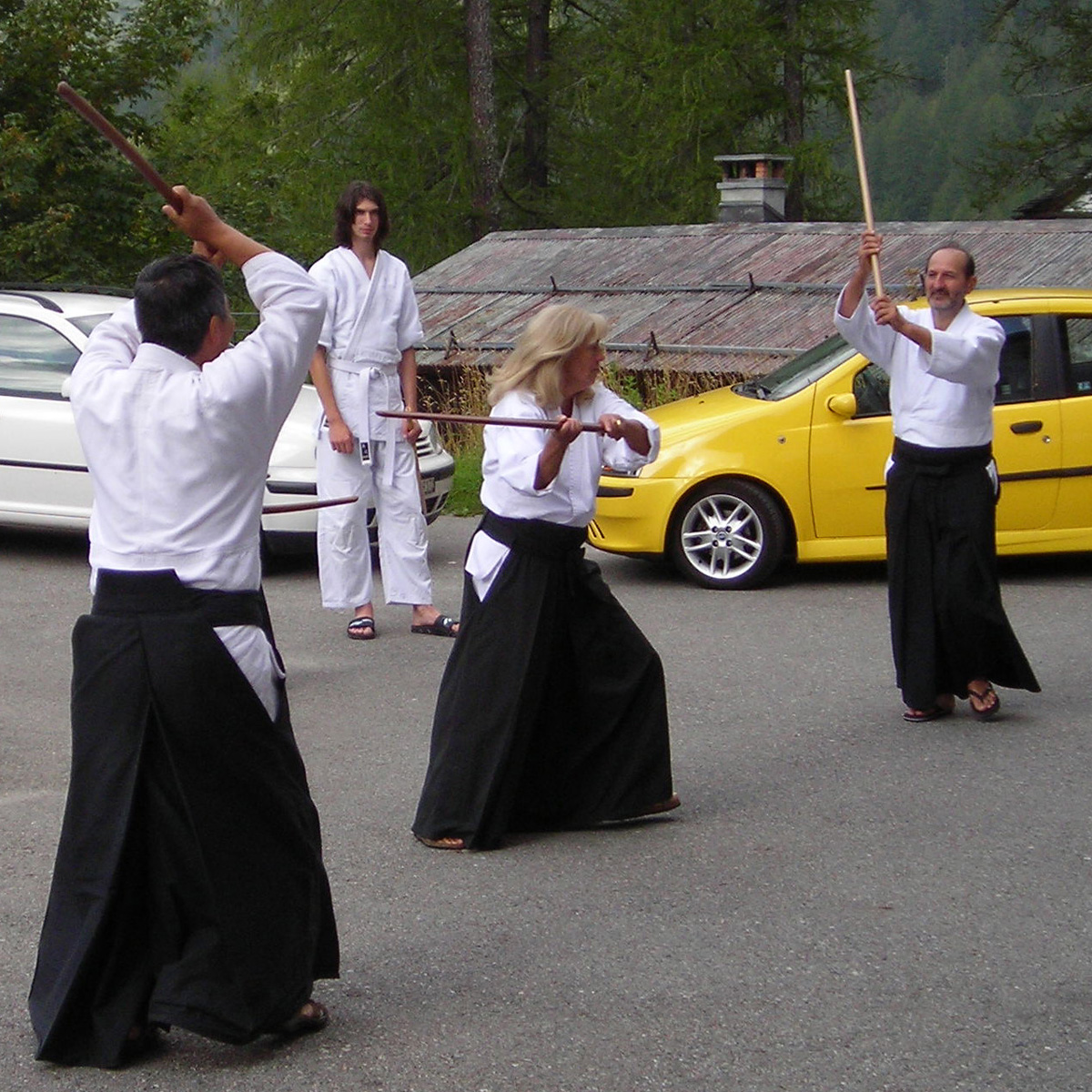
Seminar
The seminar was a complete success for all participants. This was due, among other things, to the small group size of up to 20 participants, the beautiful surroundings, the excellent food, the many recreational opportunities, and, of course, the excellent teaching by Yoshigasaki Sensei, whether in the dojo or outside on the forecourt.
Since Yoshigasaki Sensei is currently redesigning all tsuzukiwaza and the examination program, it was very interesting for the teachers to be up to date and to learn about the motivations behind the changes.
Watanabe Sensei's Shodo instruction was also very interesting. Some participants certainly received an impulse to delve deeper into this art.
After the seminar, Bernhard brought Yoshigasaki Sensei and Watanabe Sensei to Bern for the Paul Klee exhibition and then to Herzogenhorn in the Black Forest, where the participants of the next seminar were already waiting for the two teachers.
We are all already looking forward to the summer seminar with Yoshigasaki Sensei in Bosco Gurin next year.










